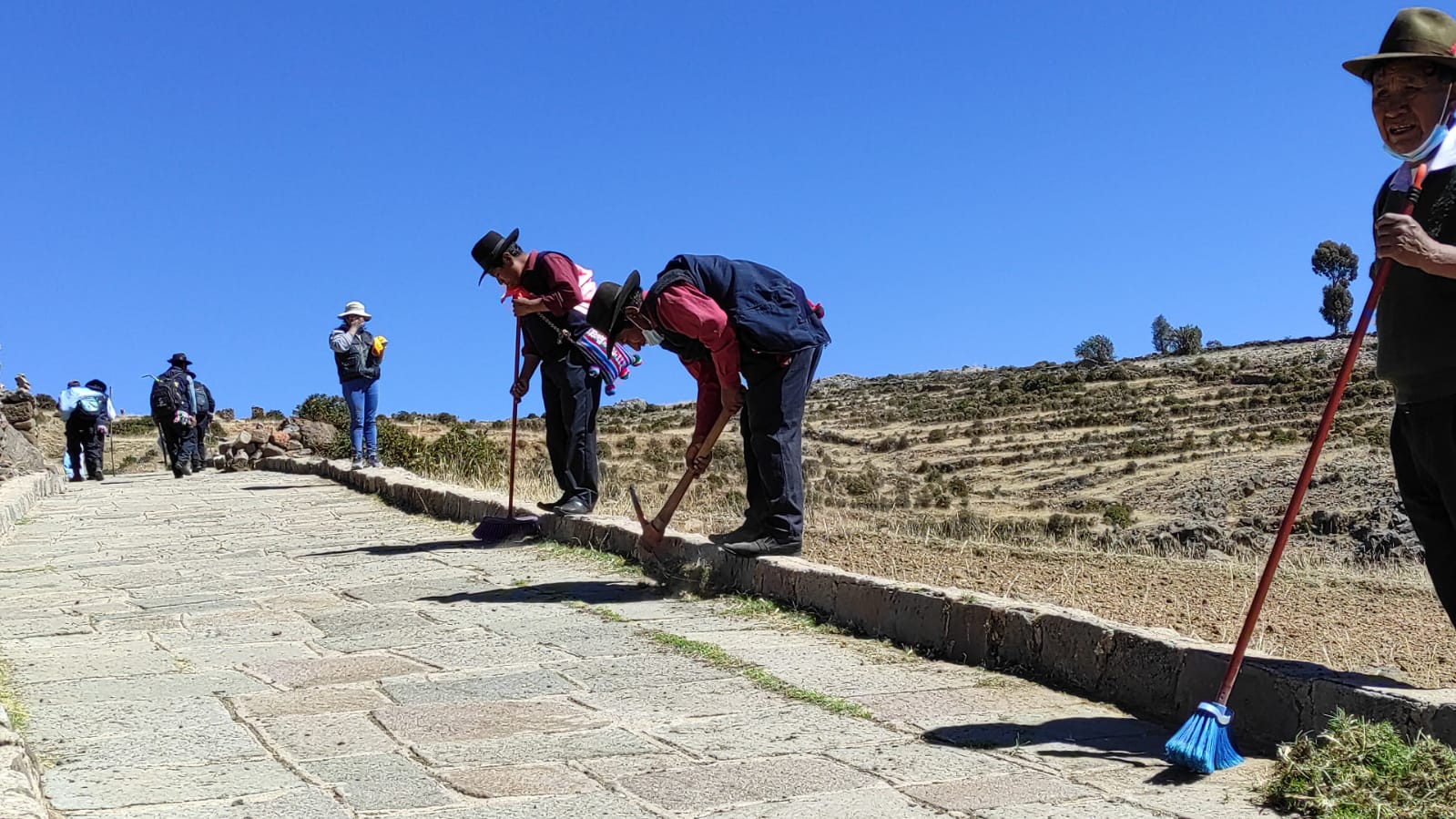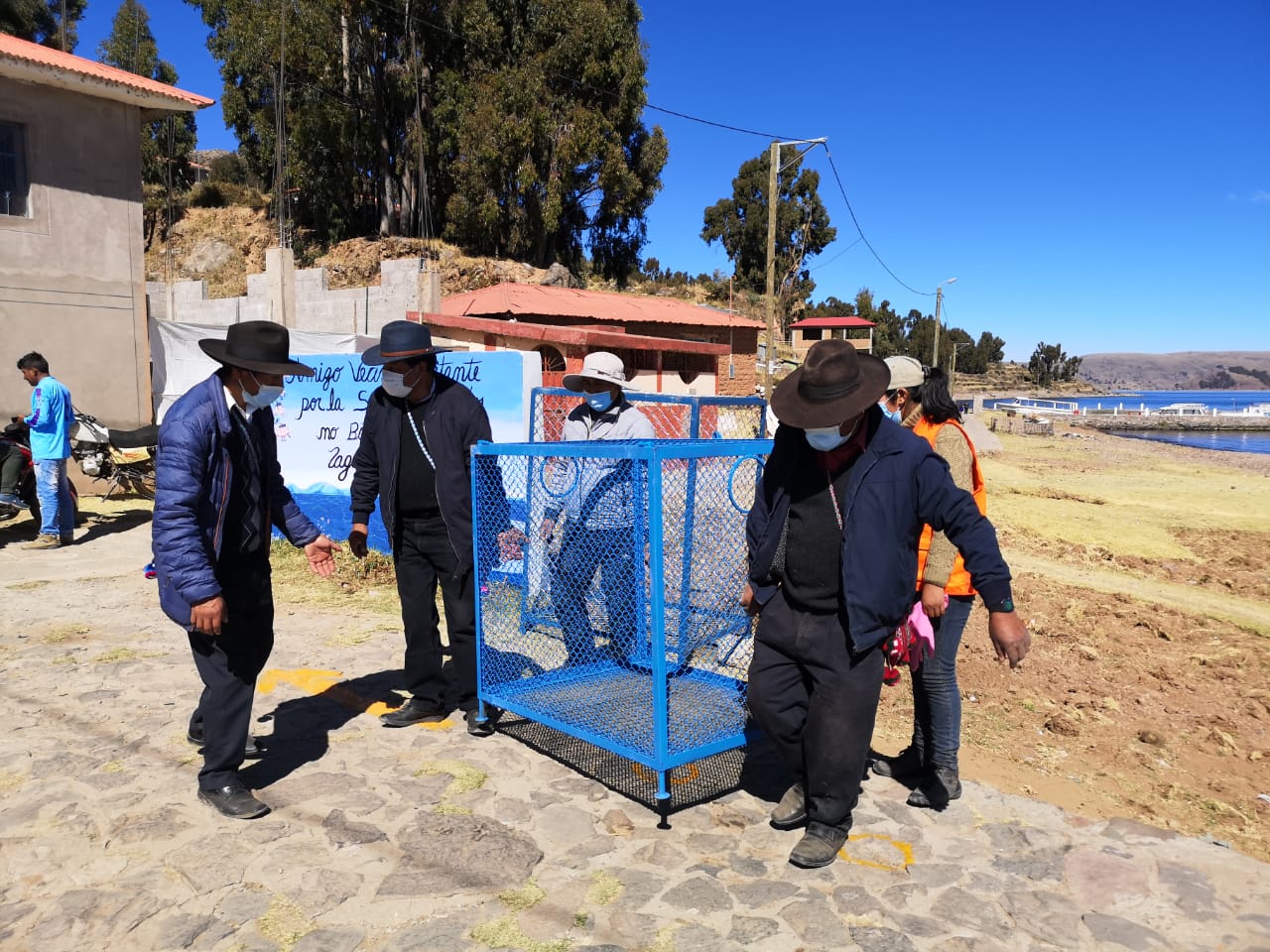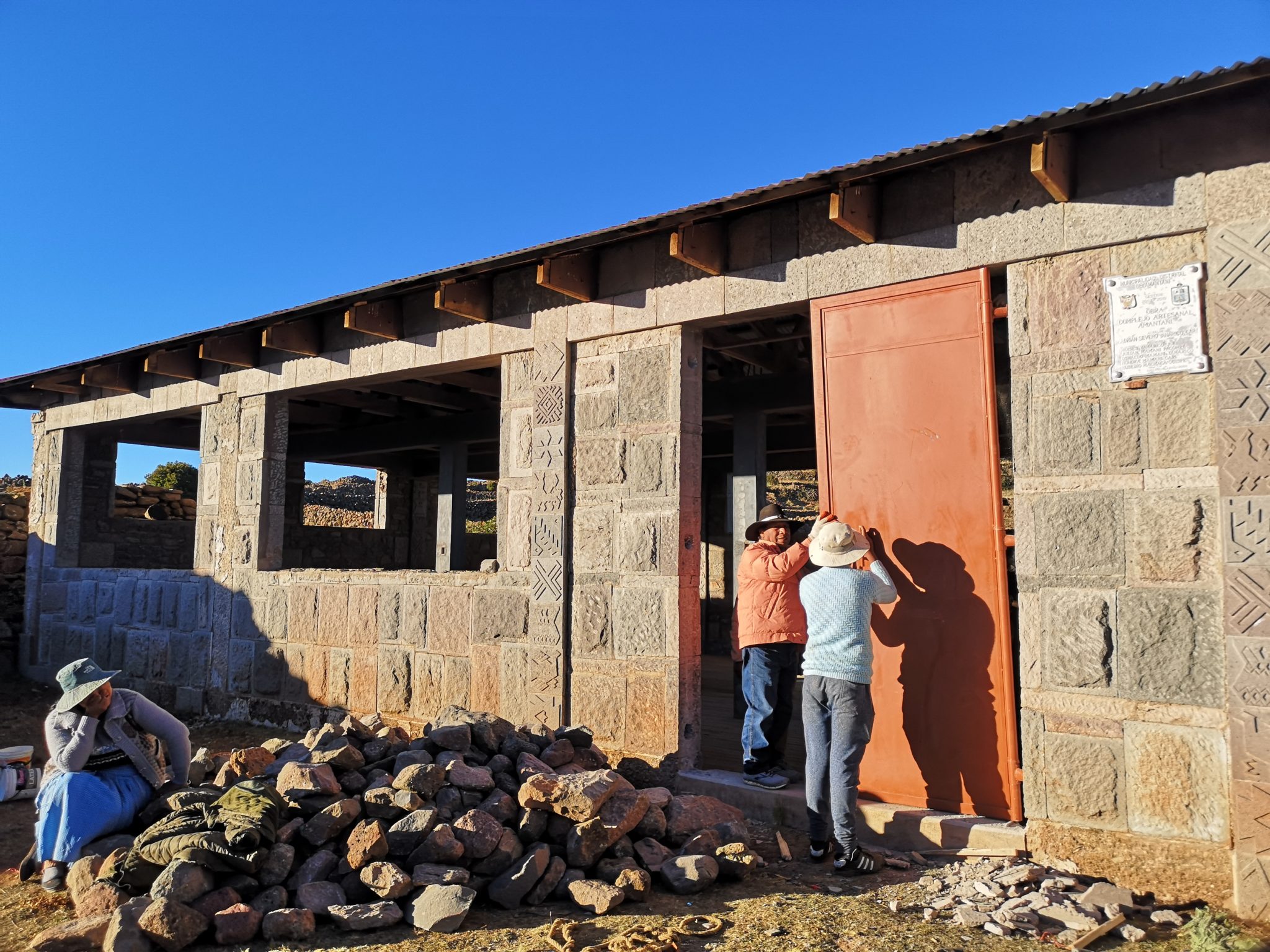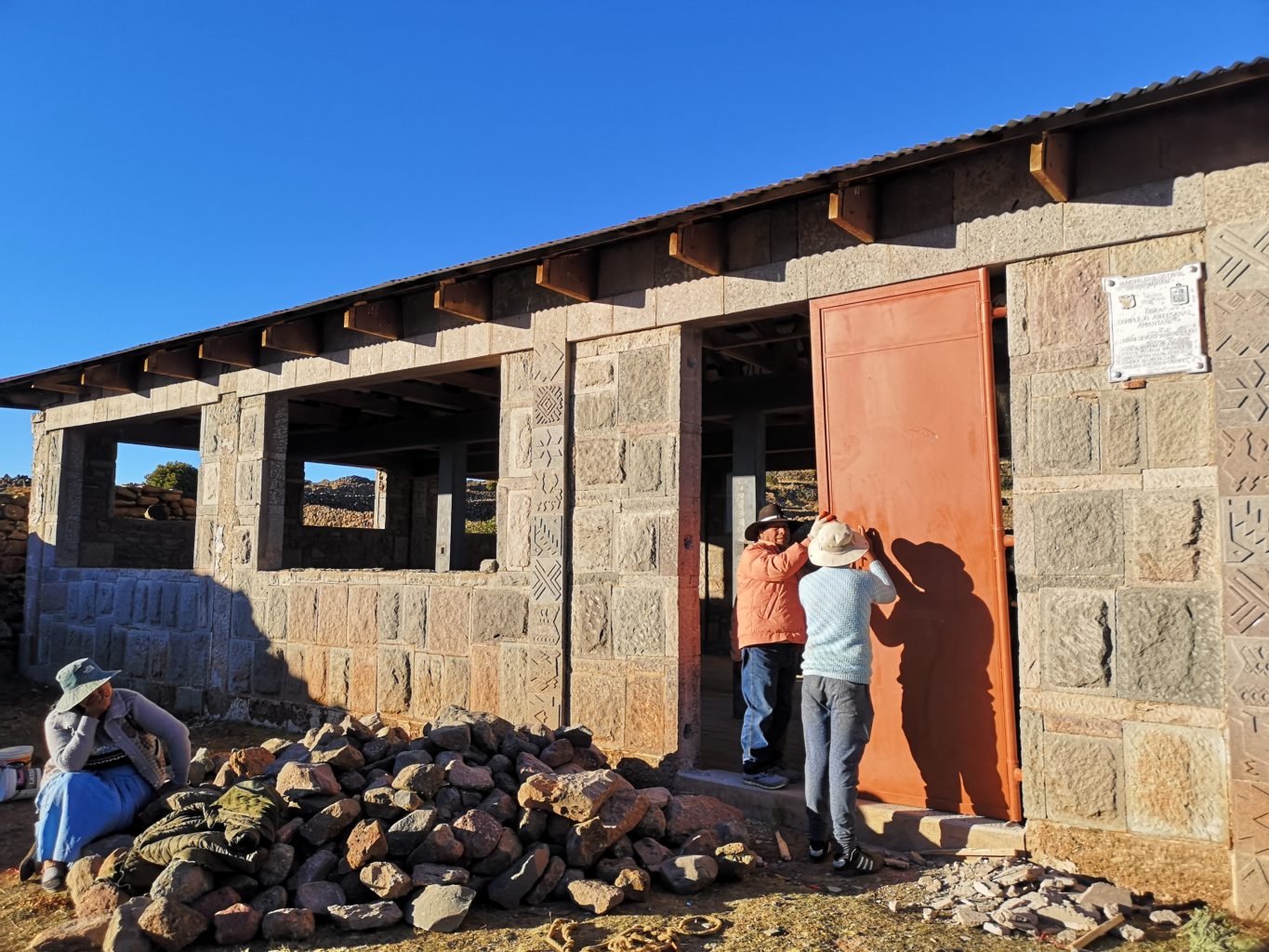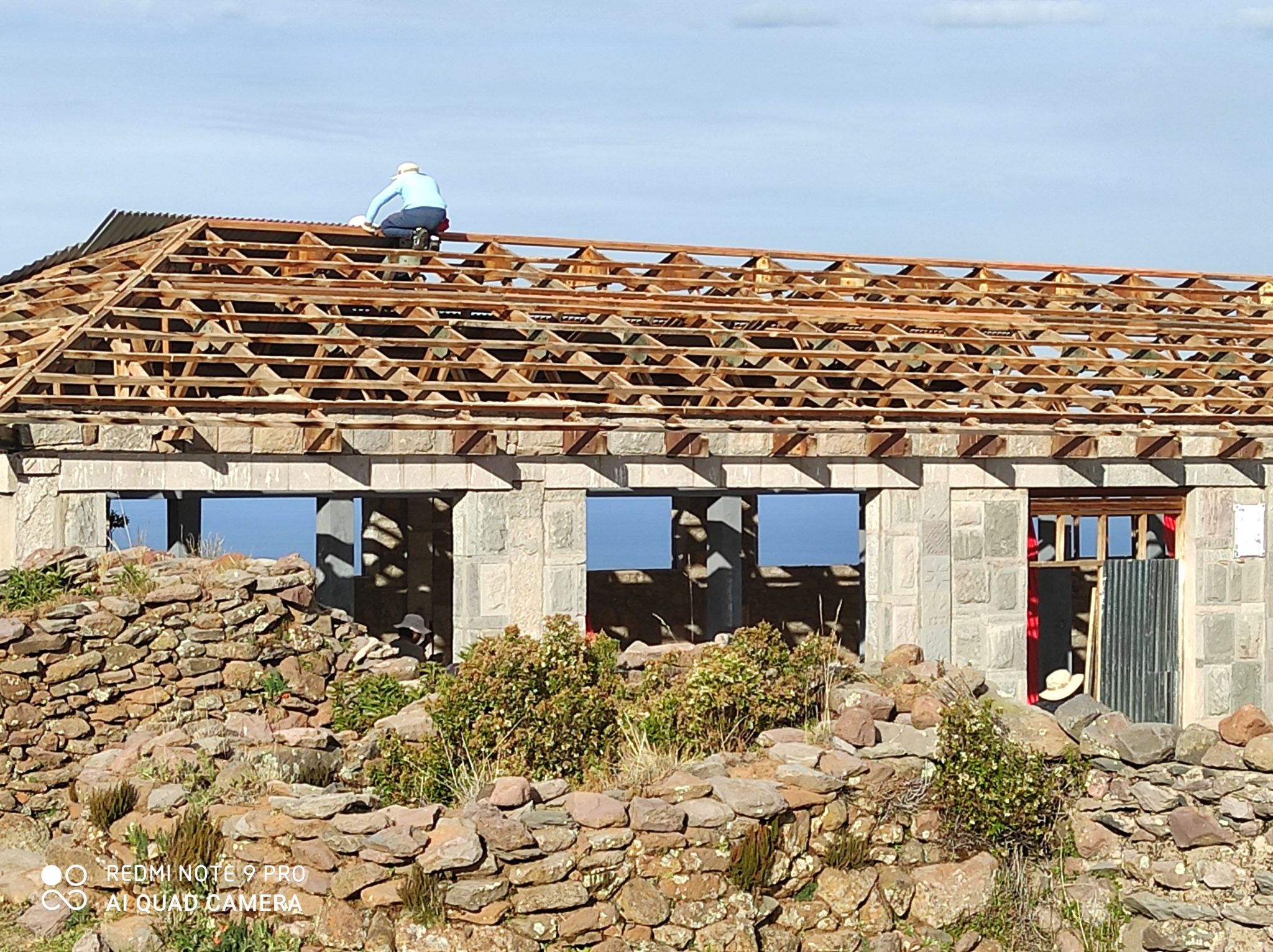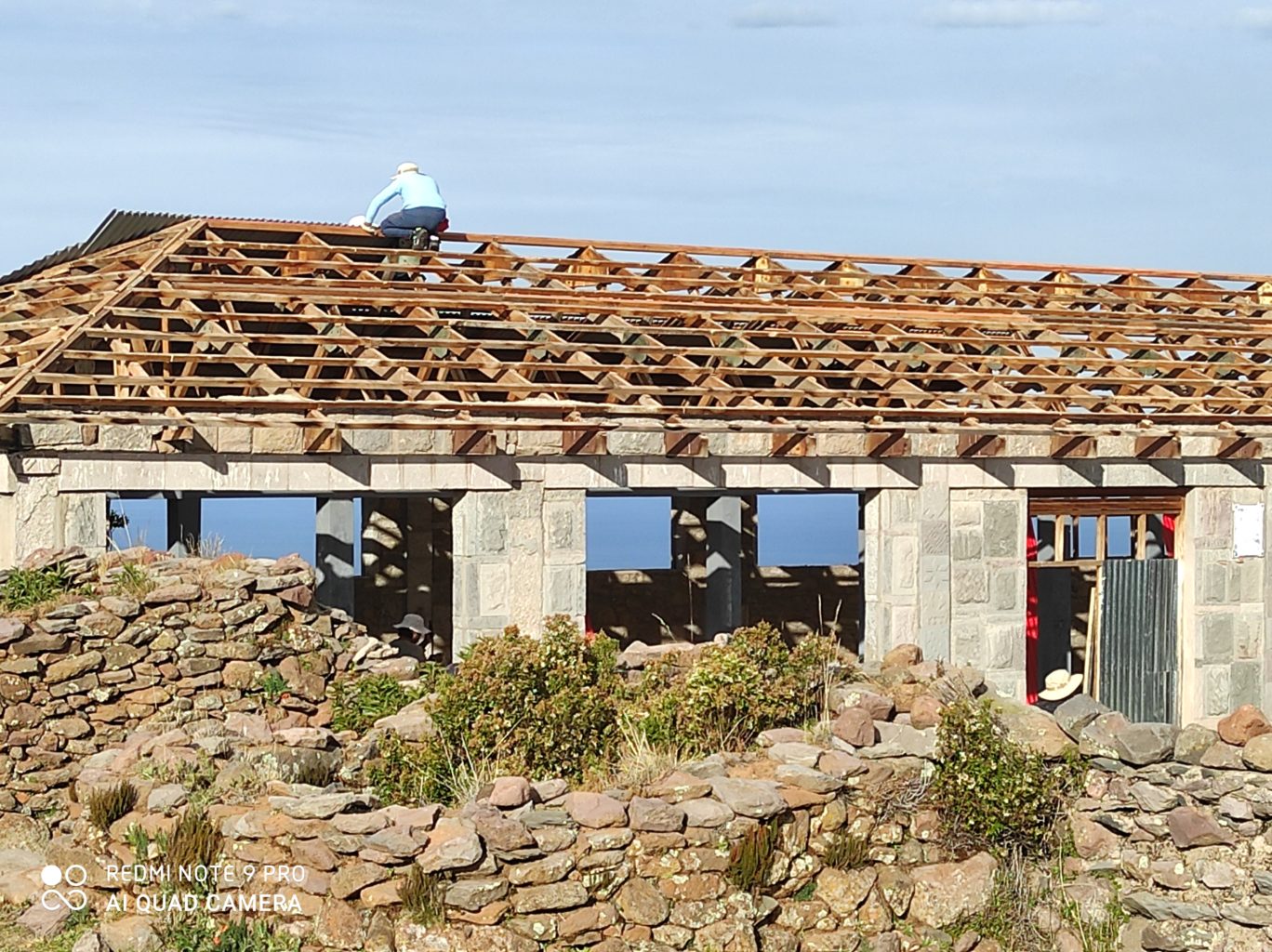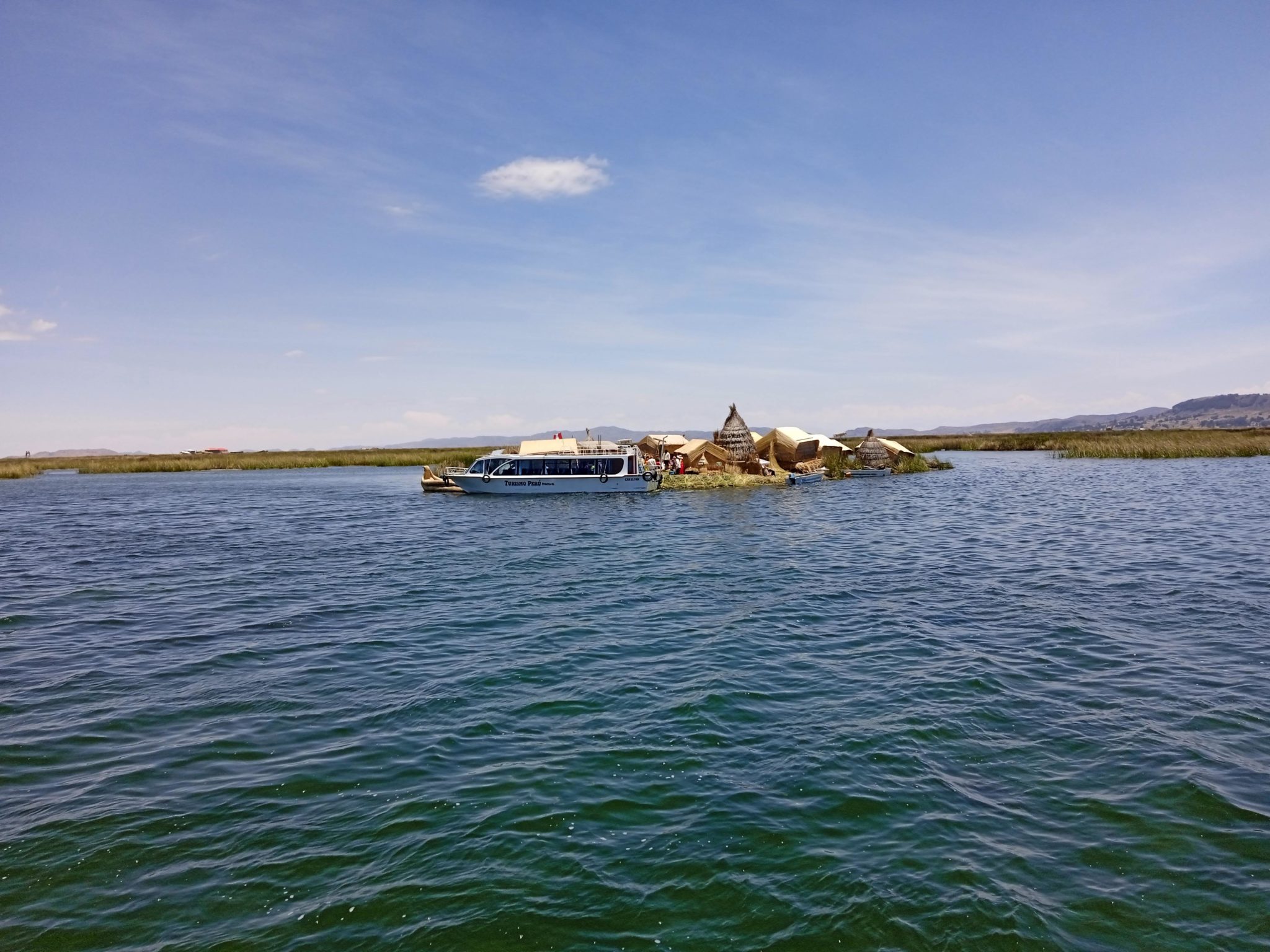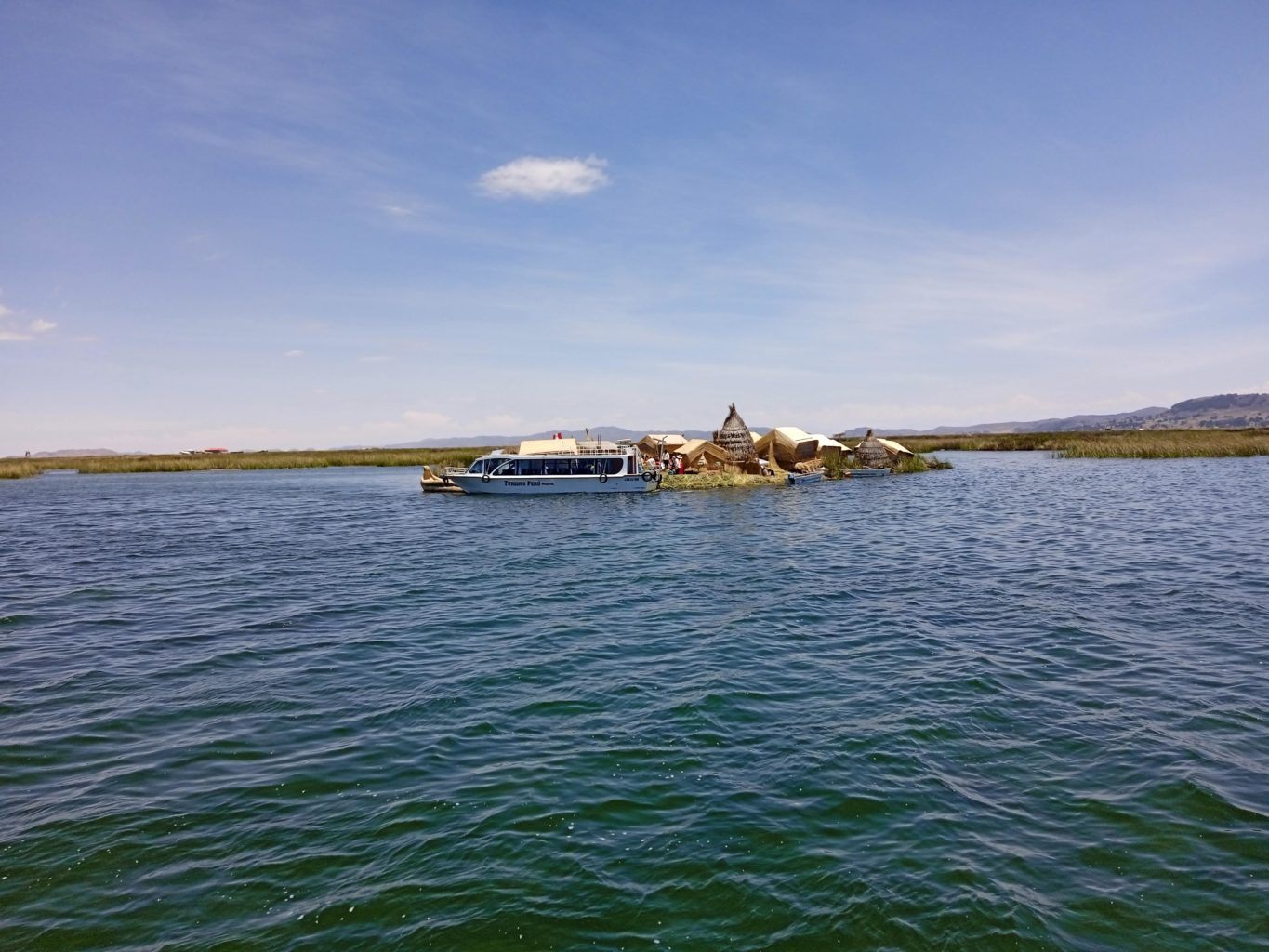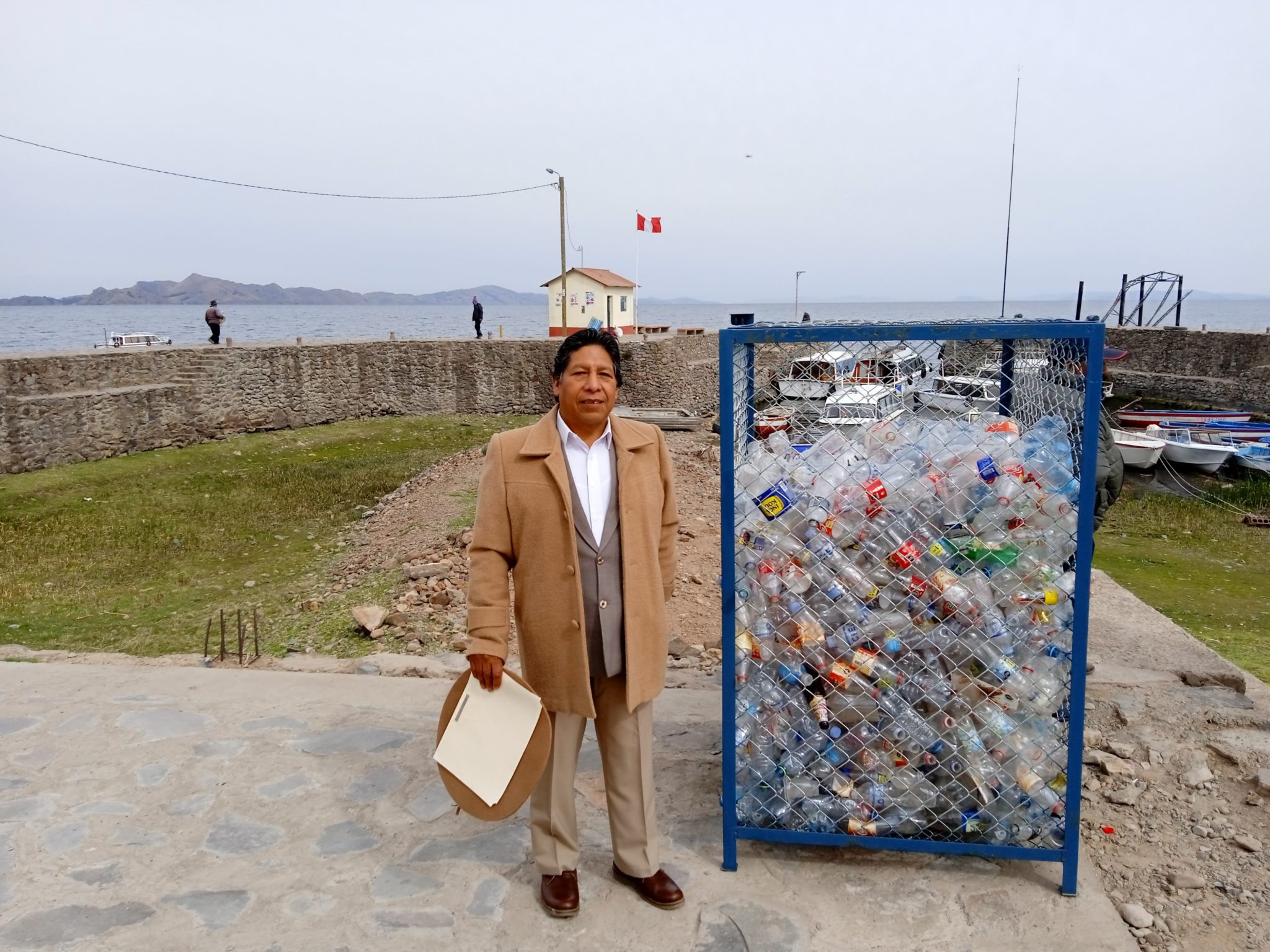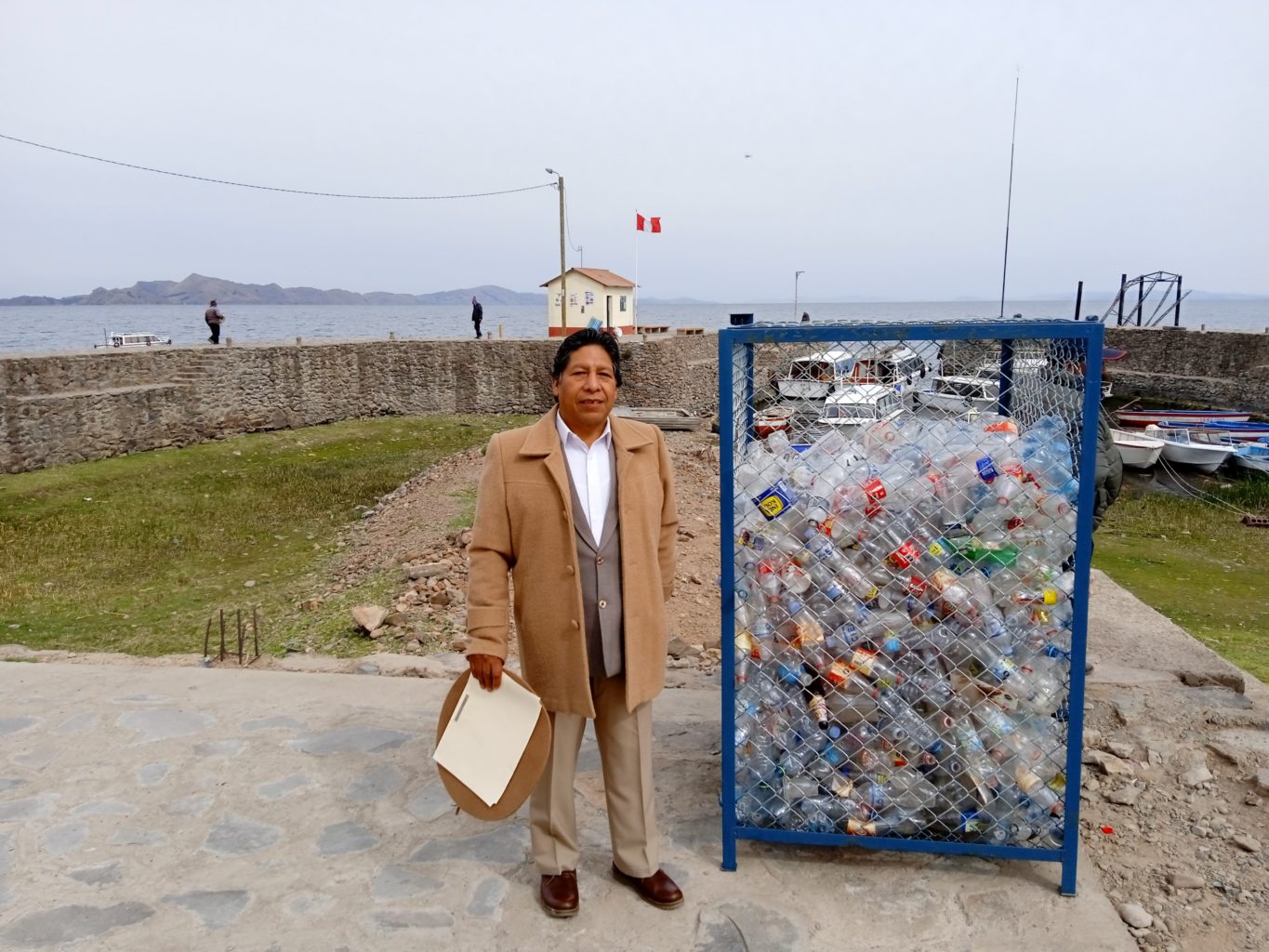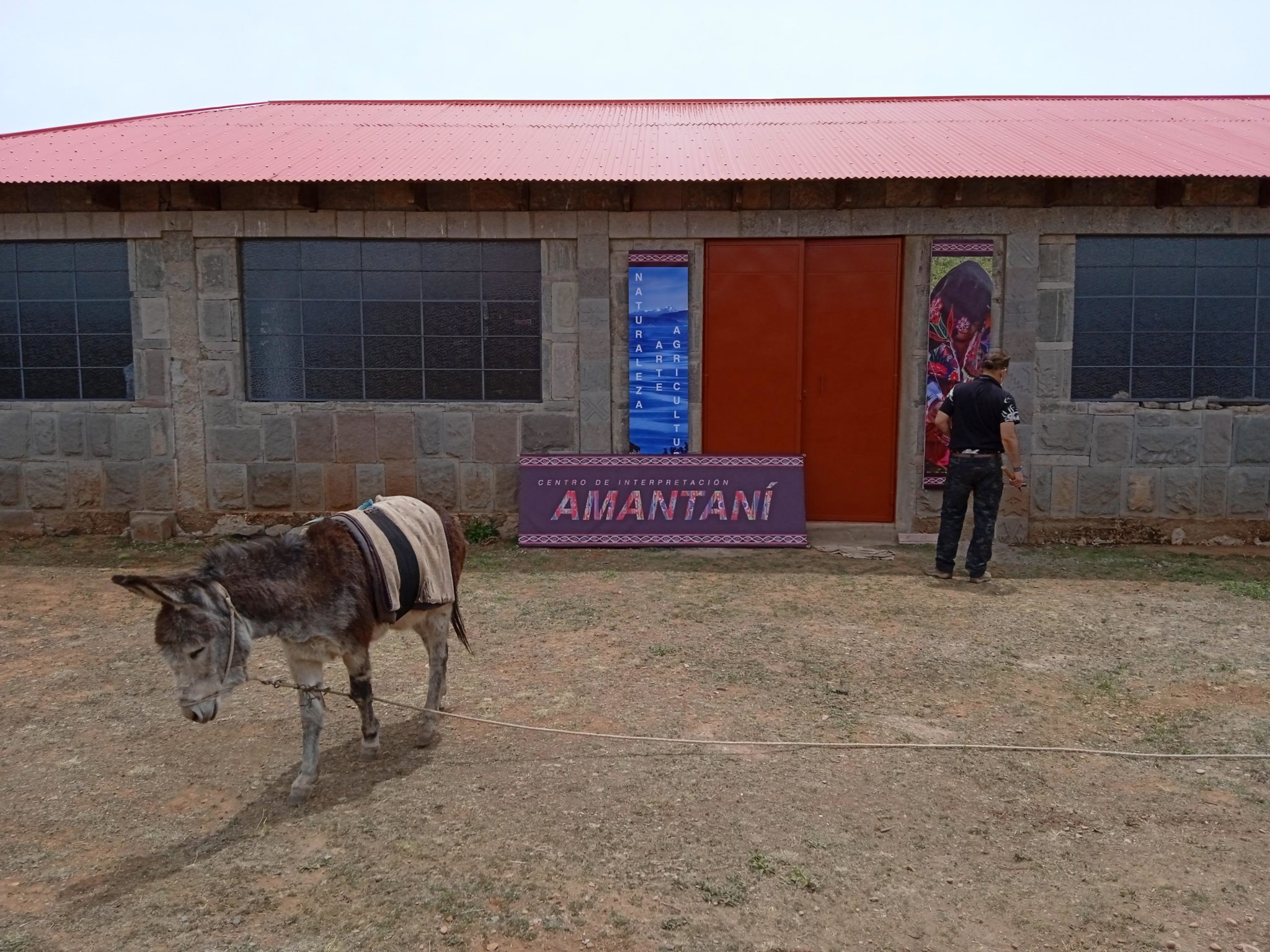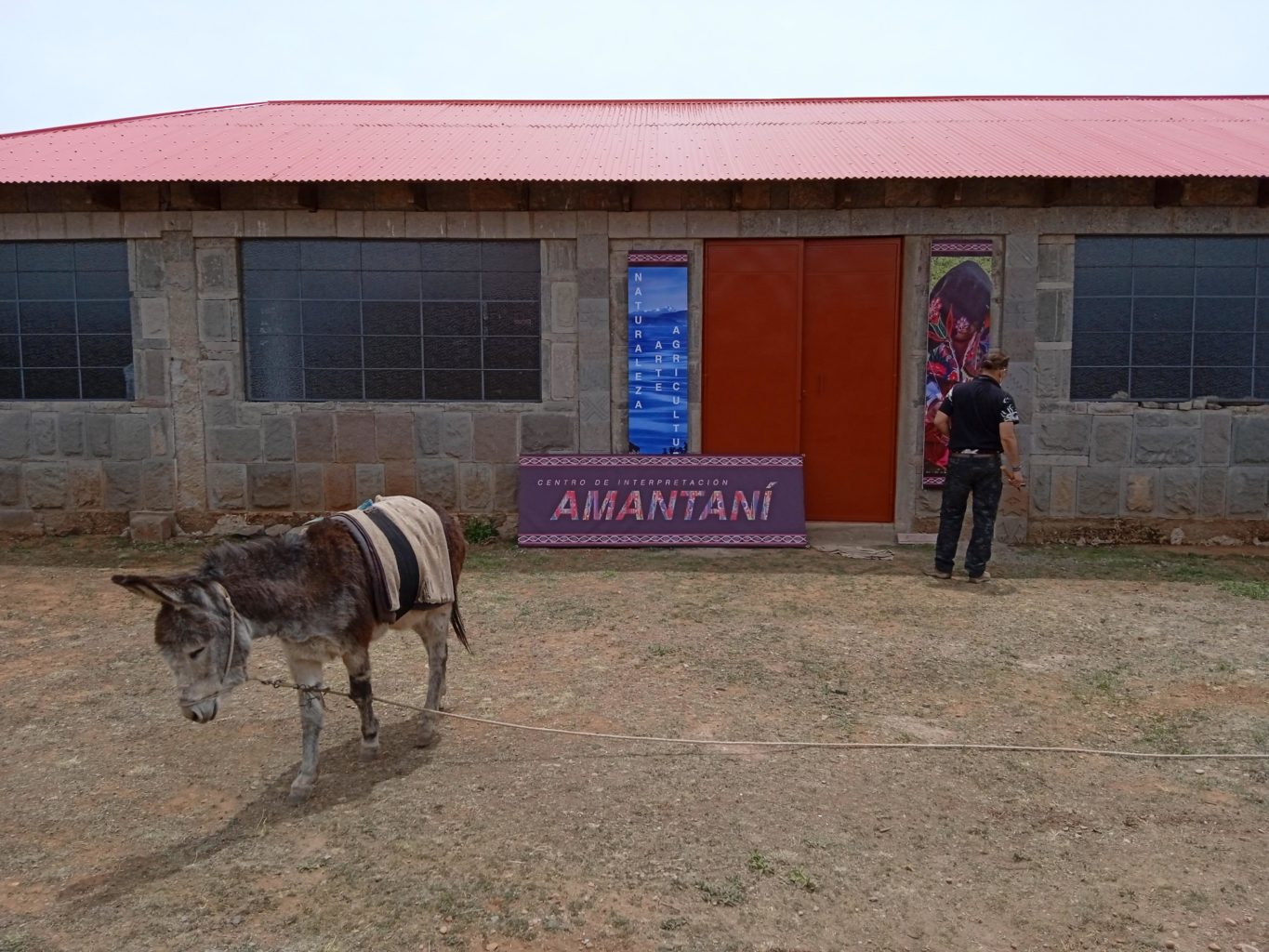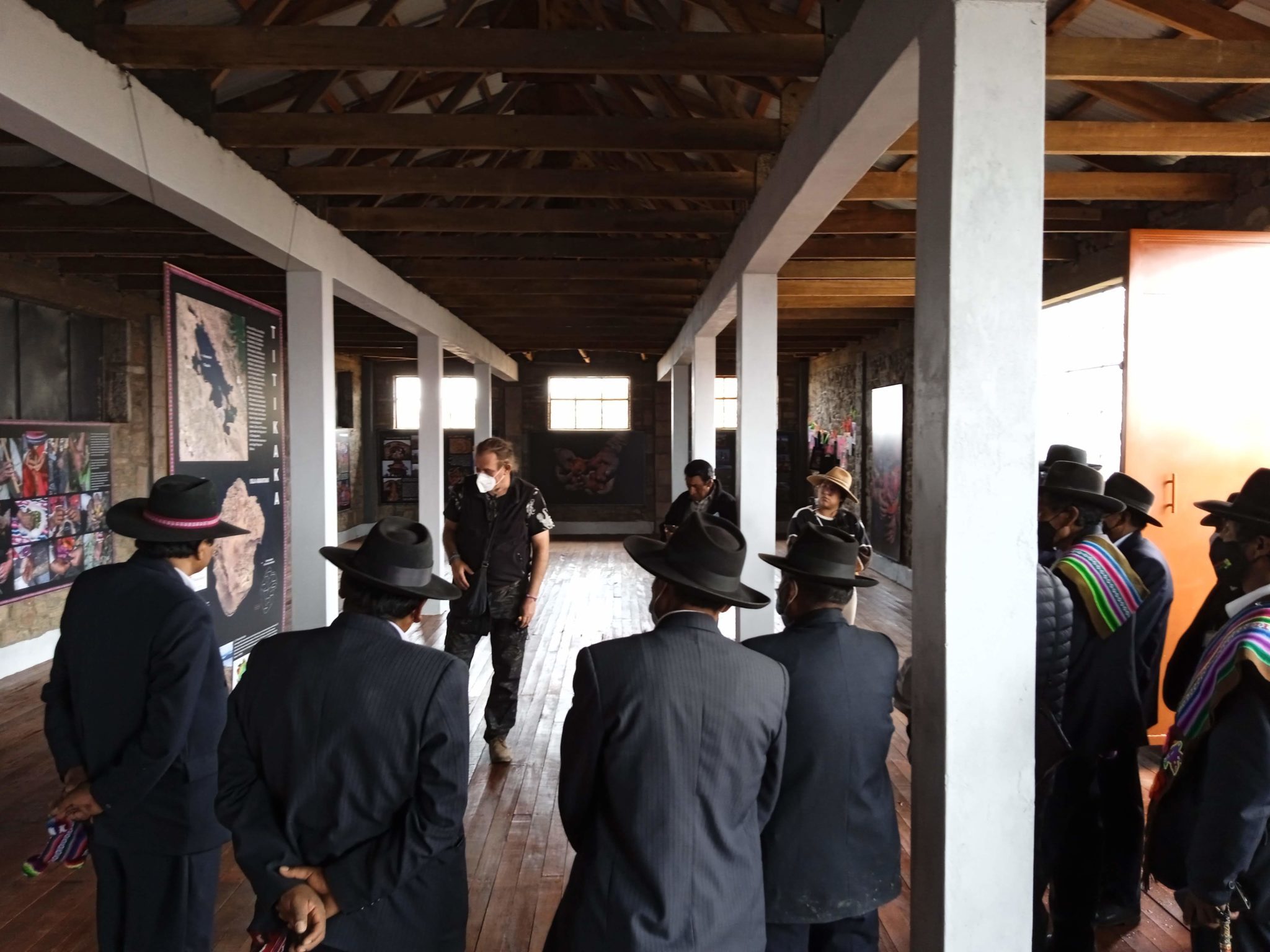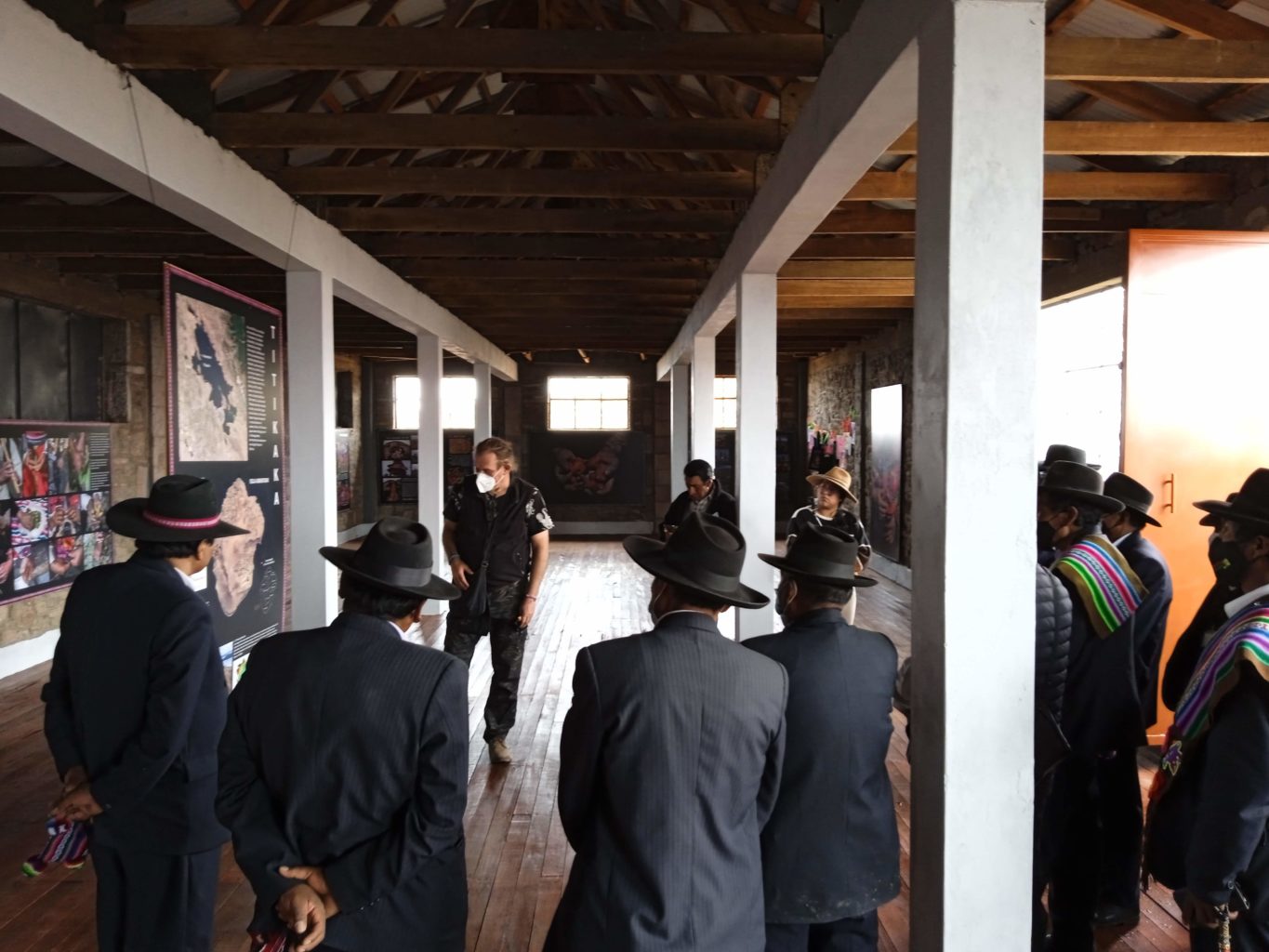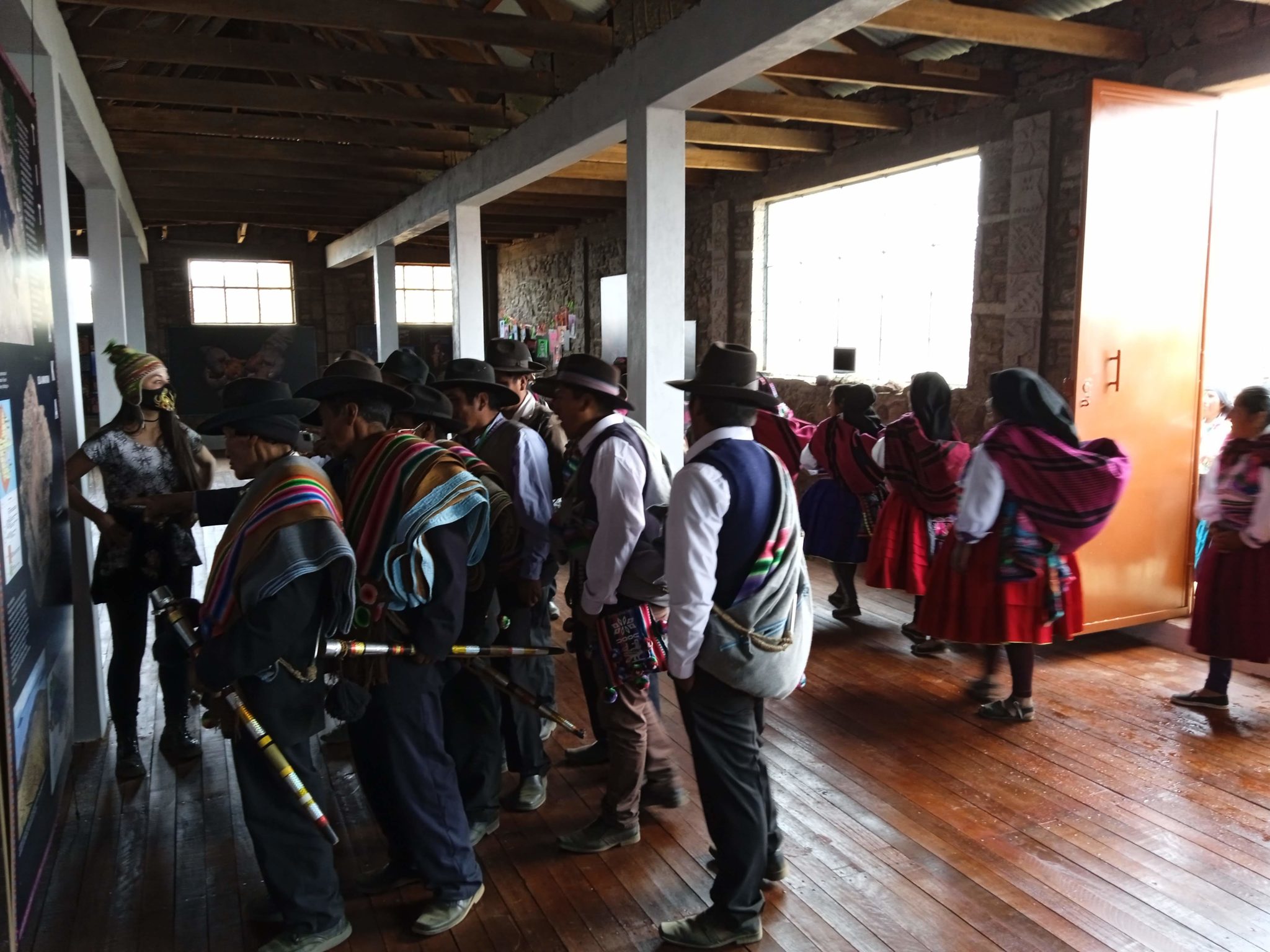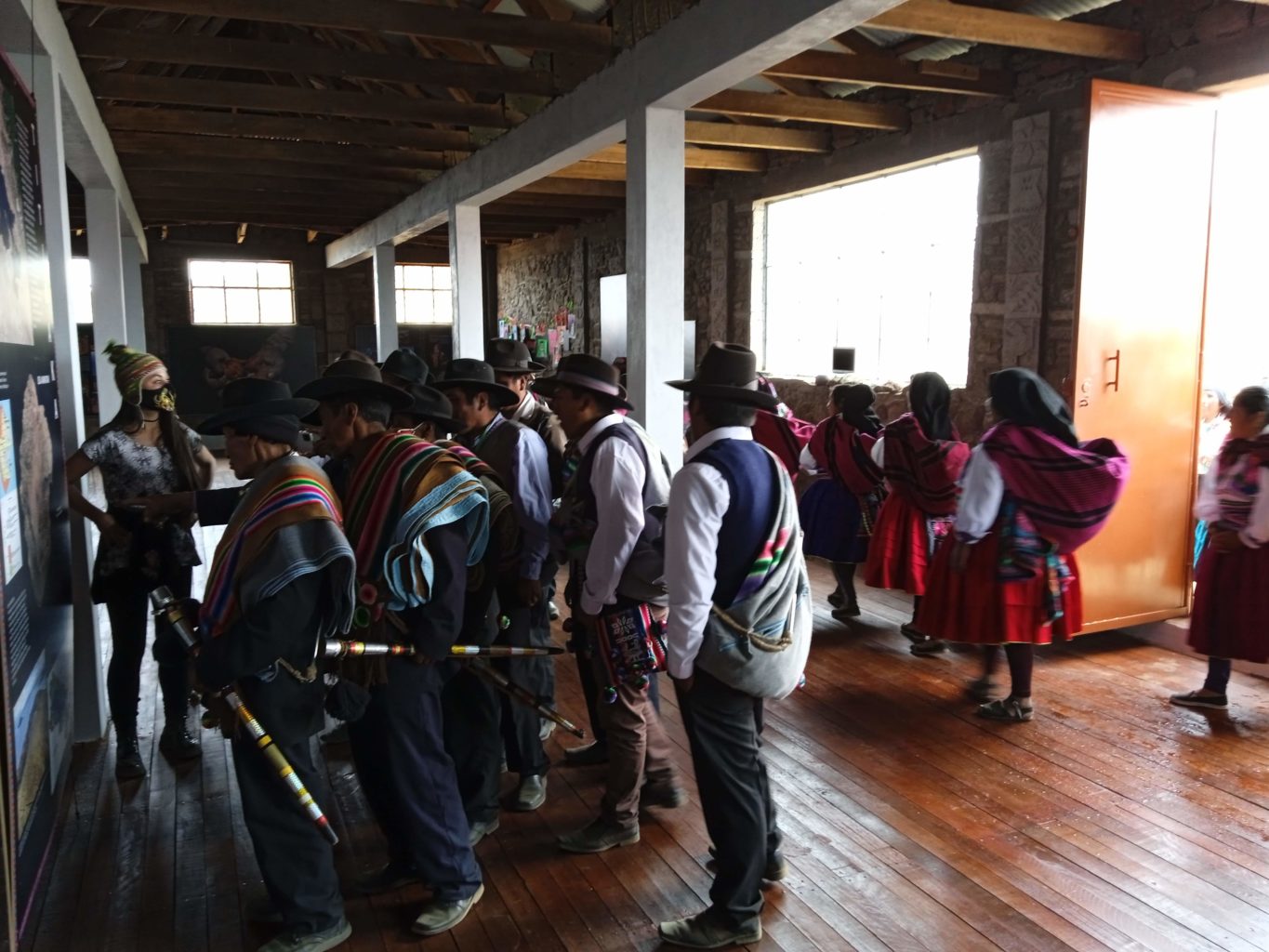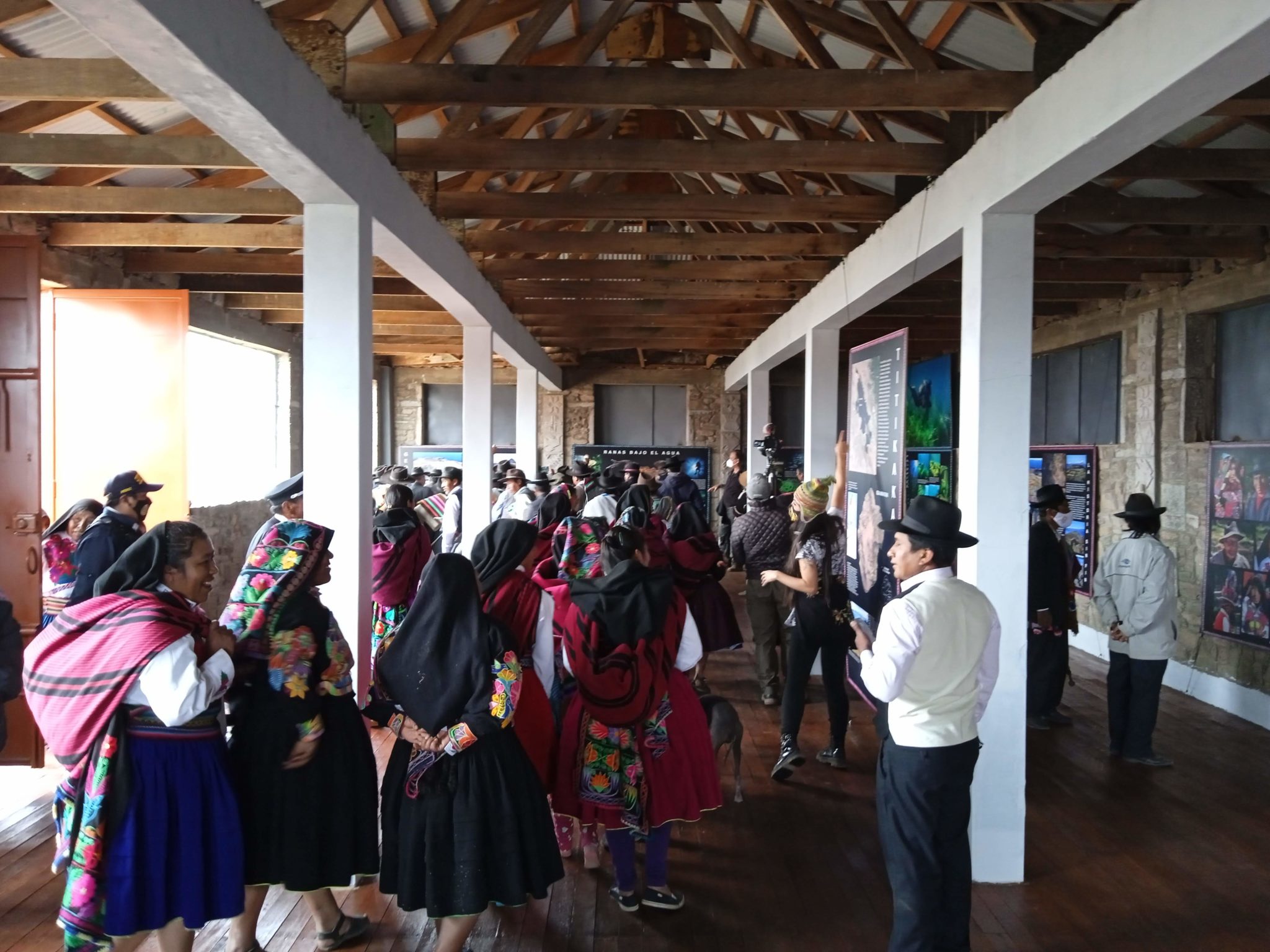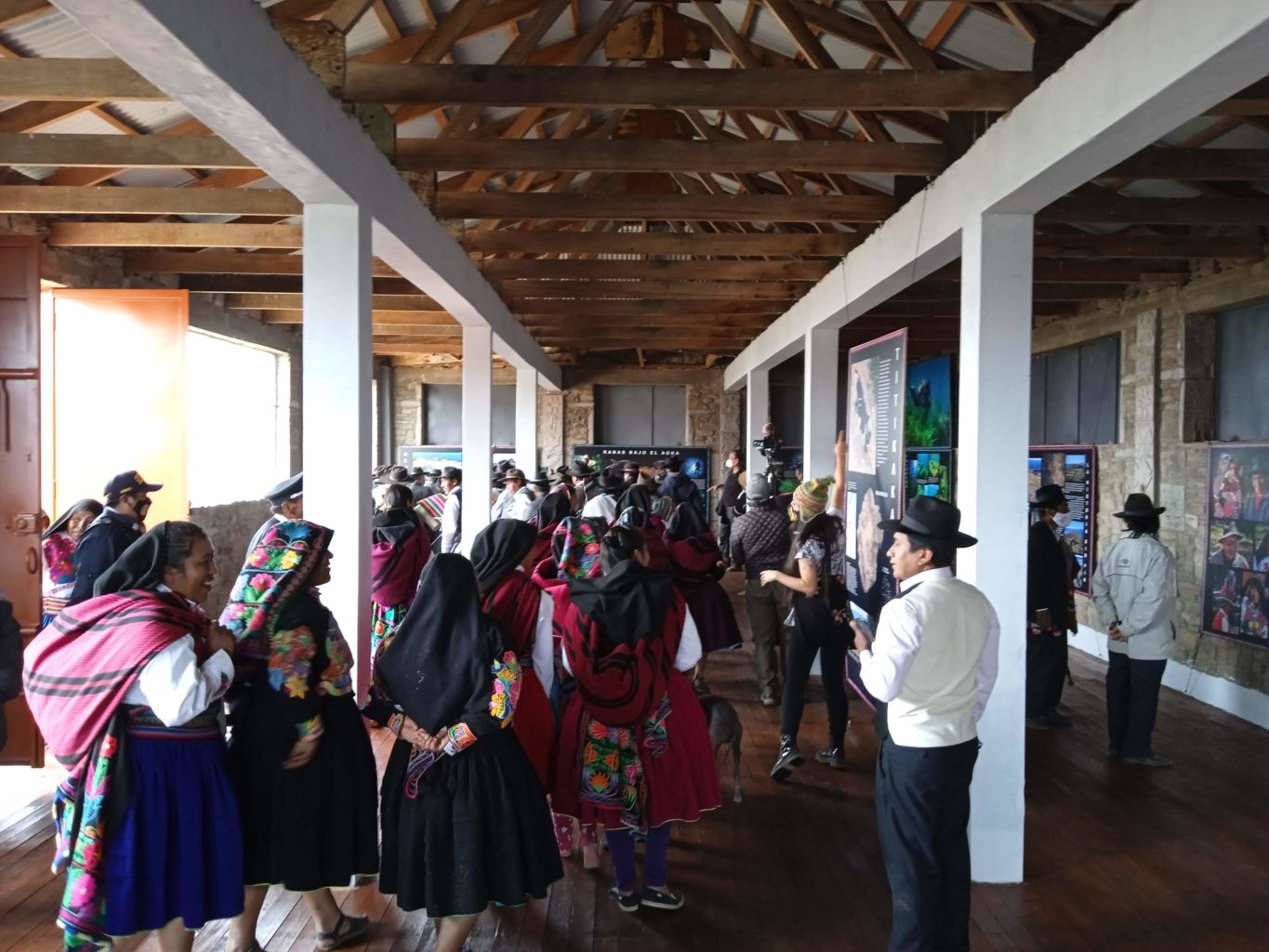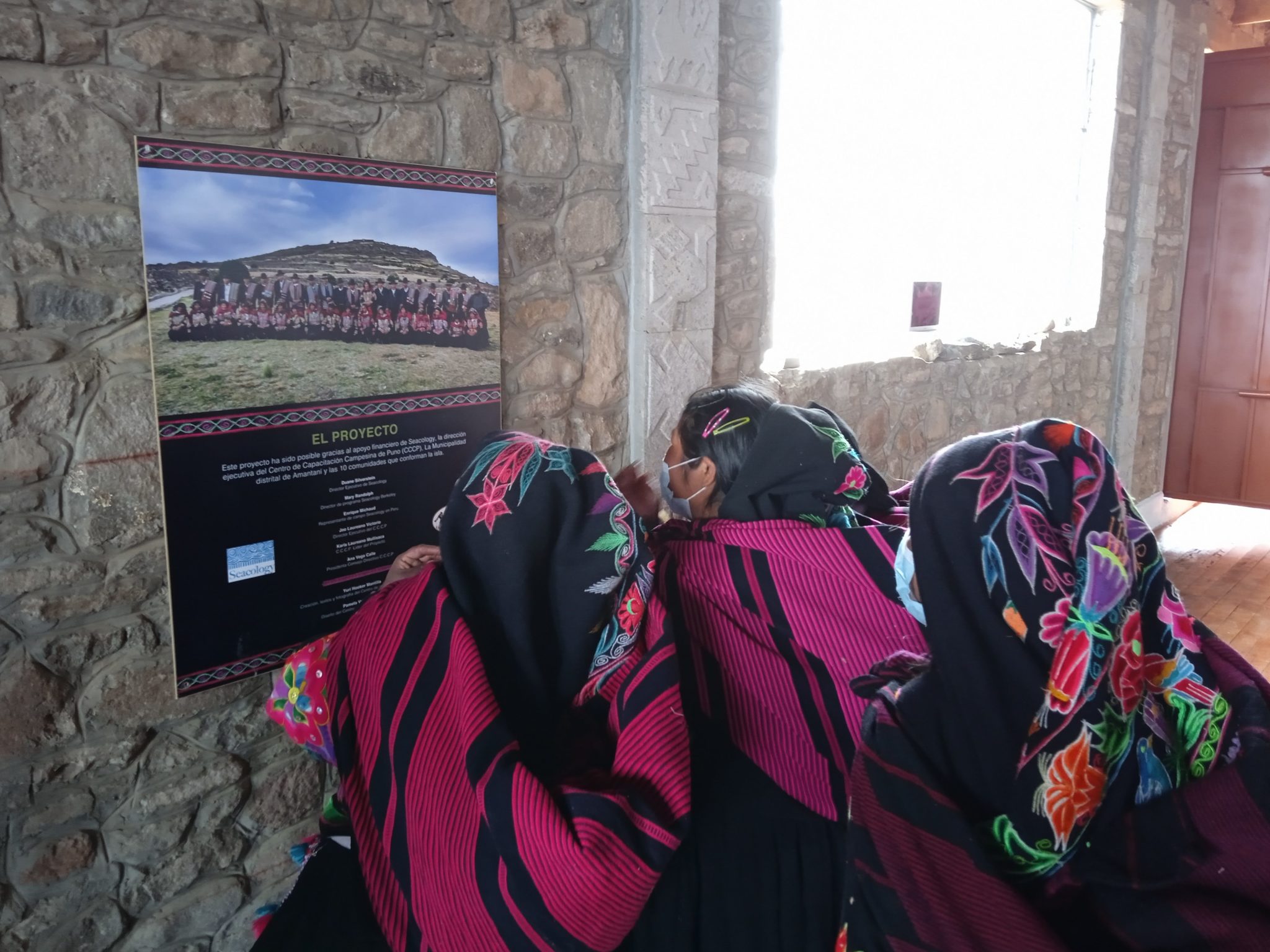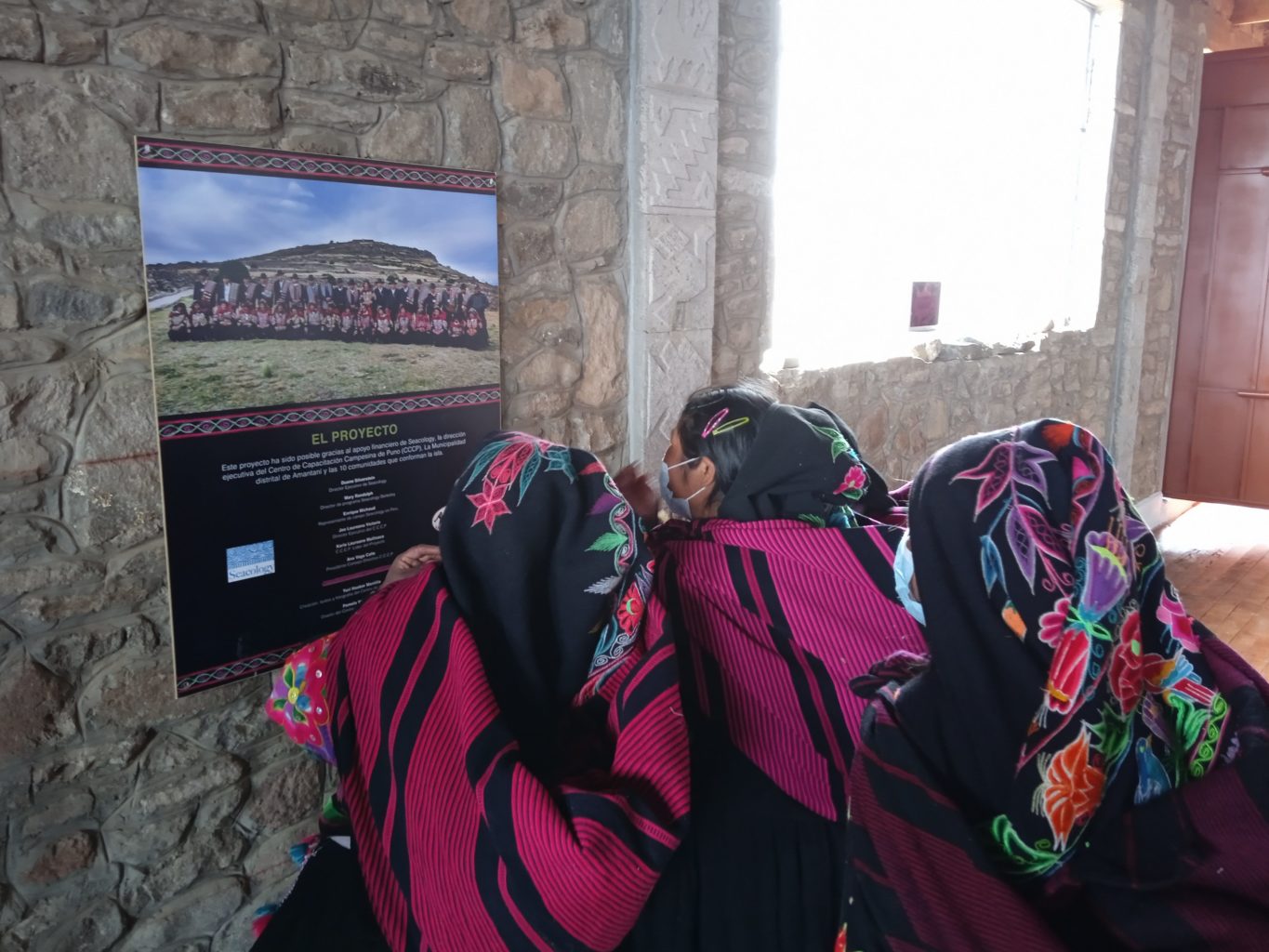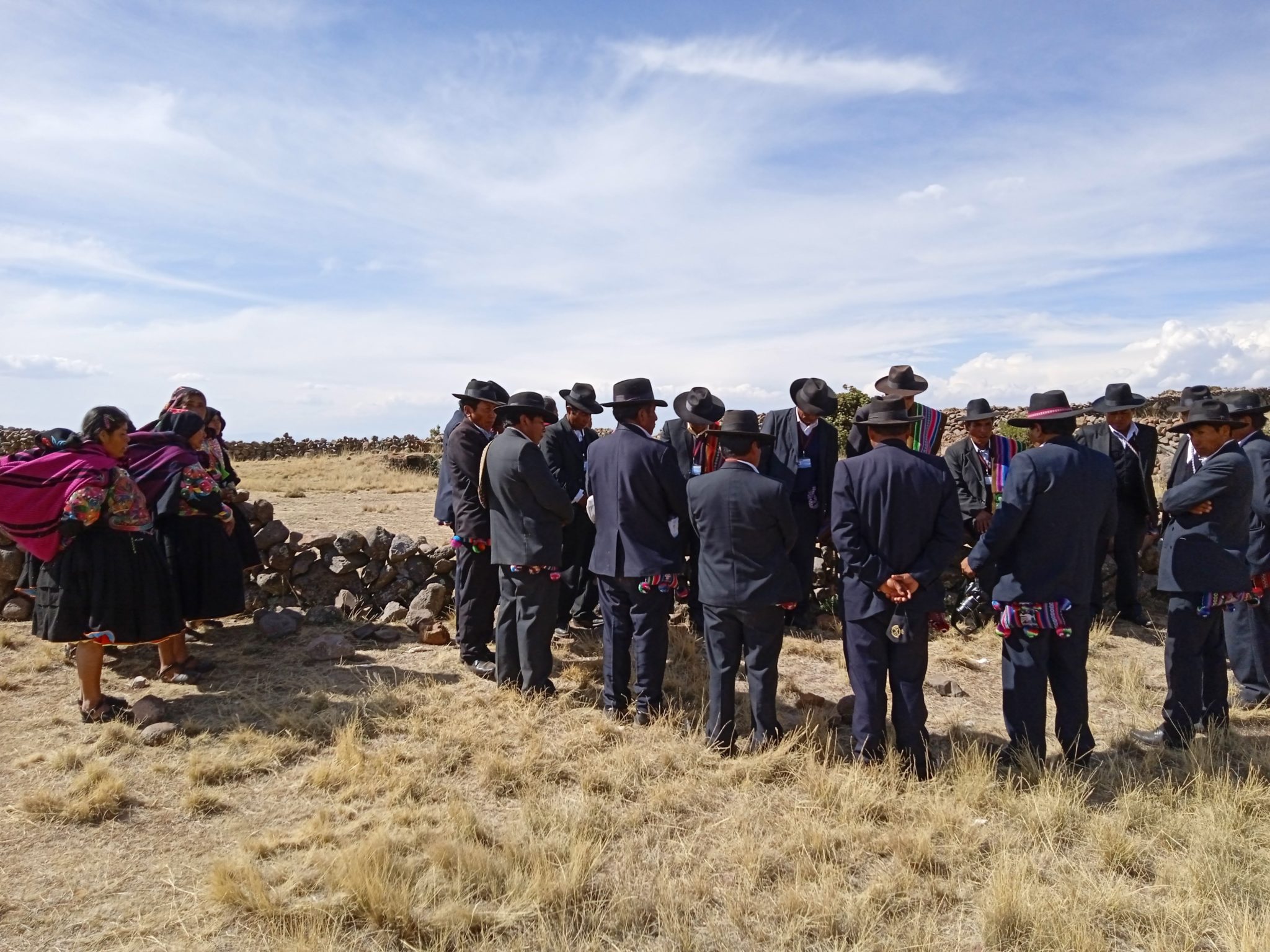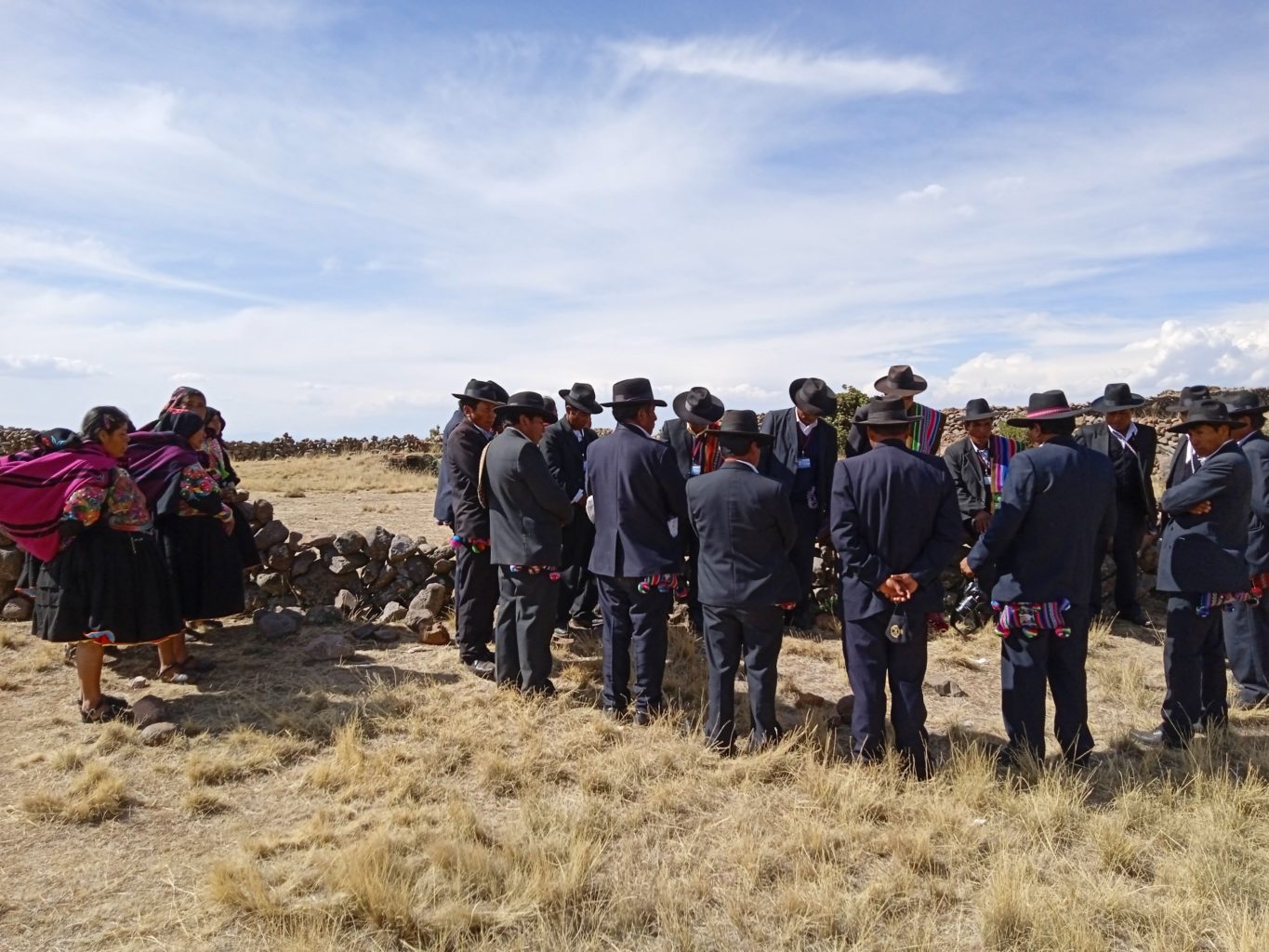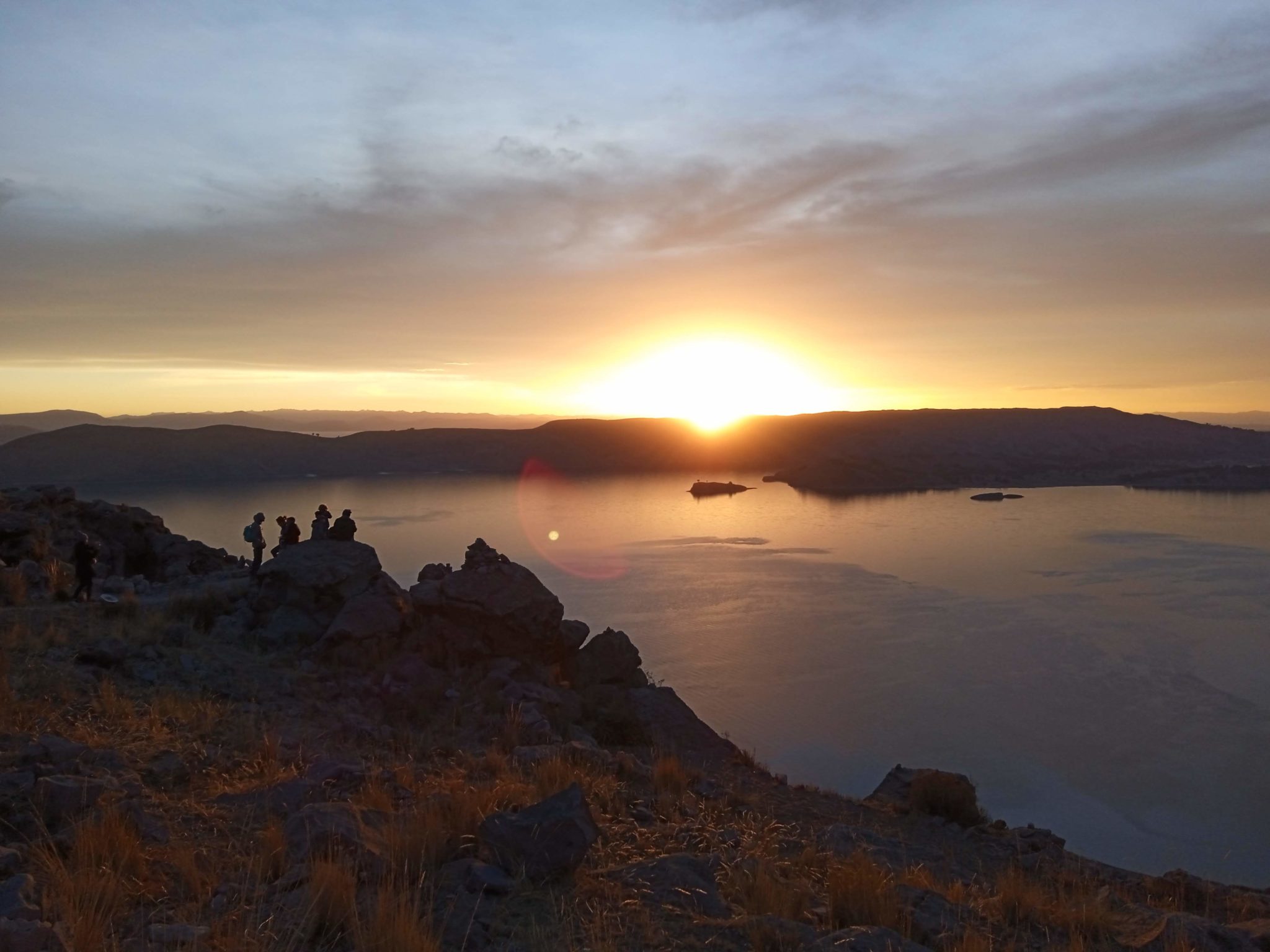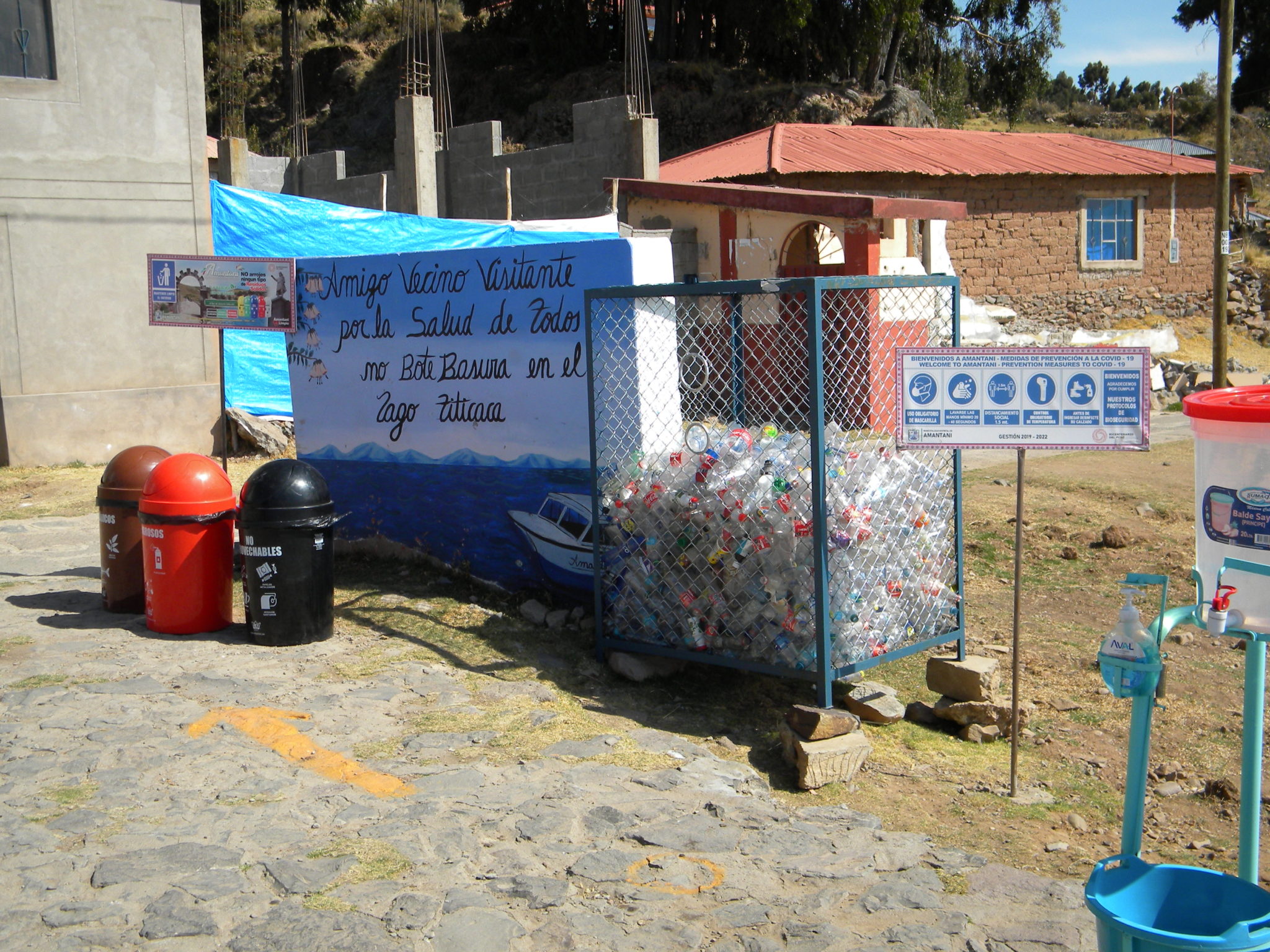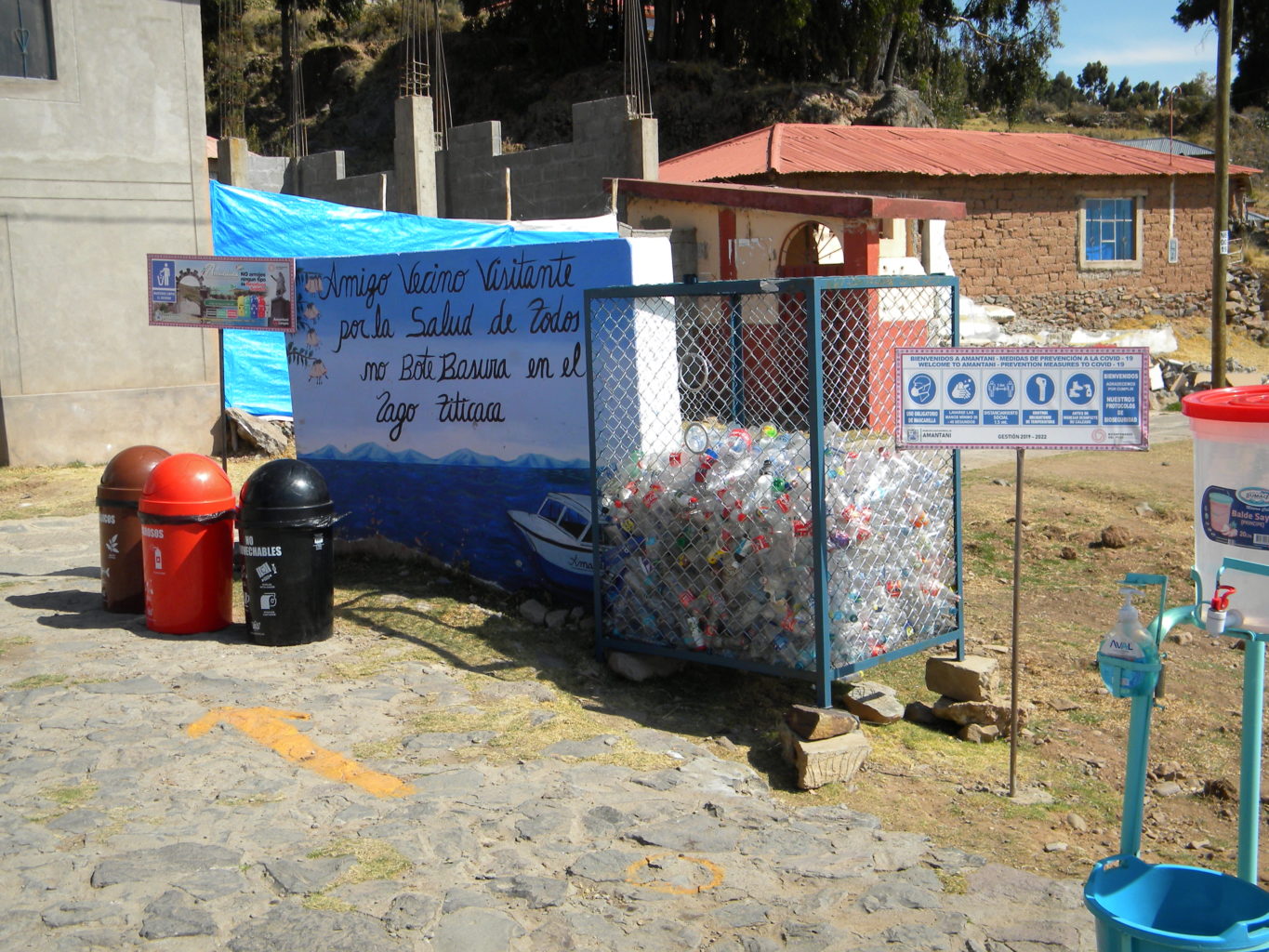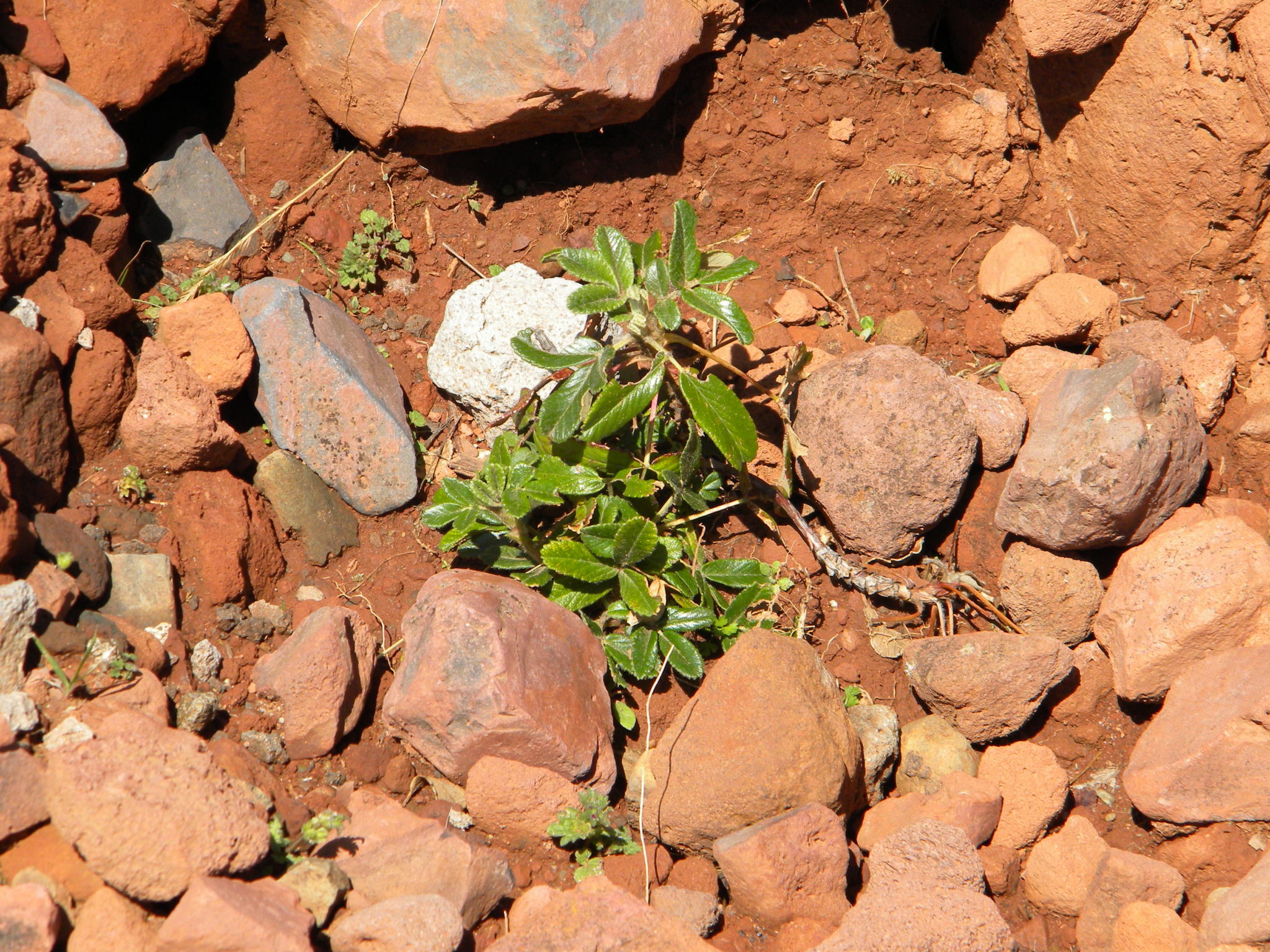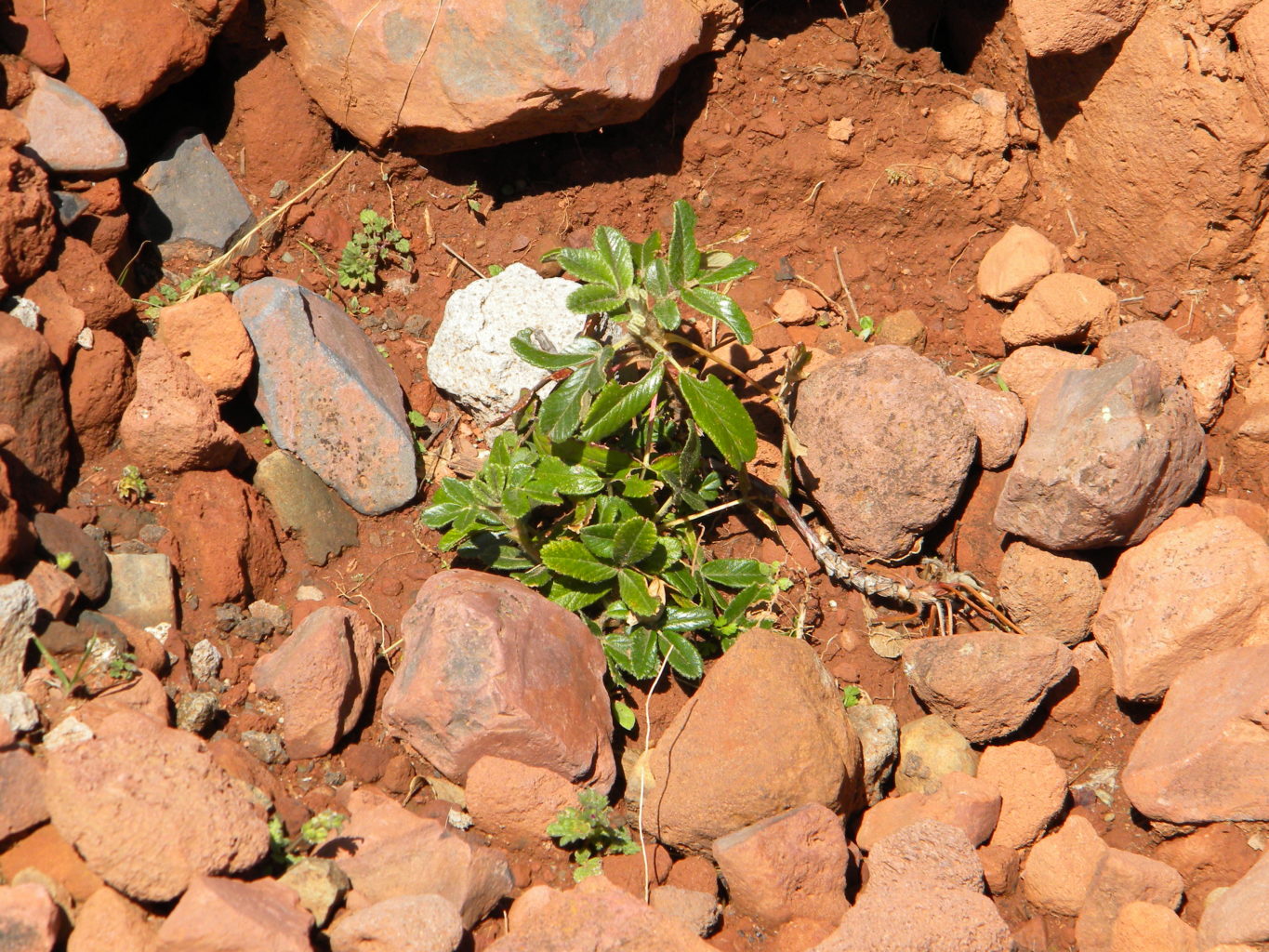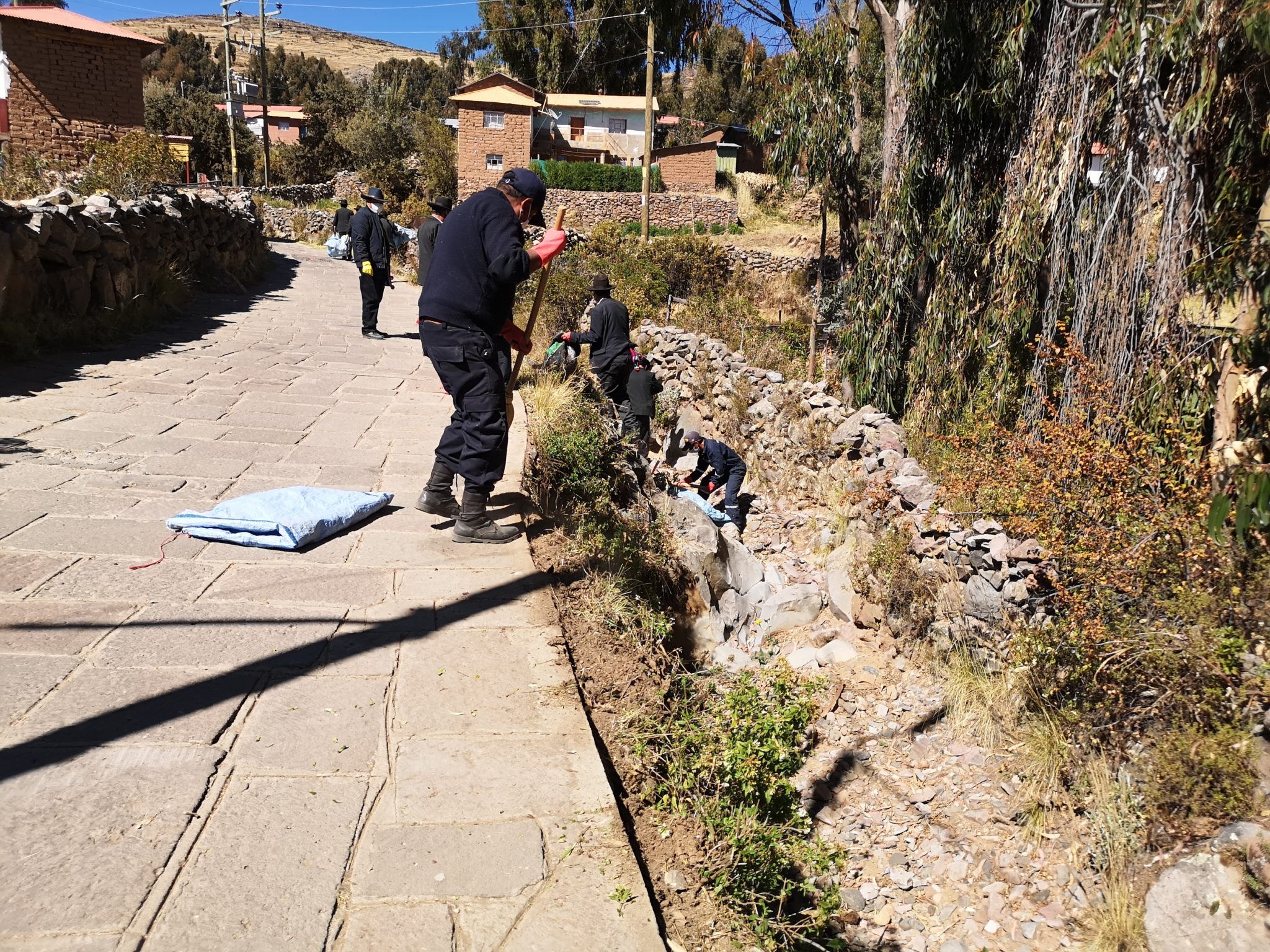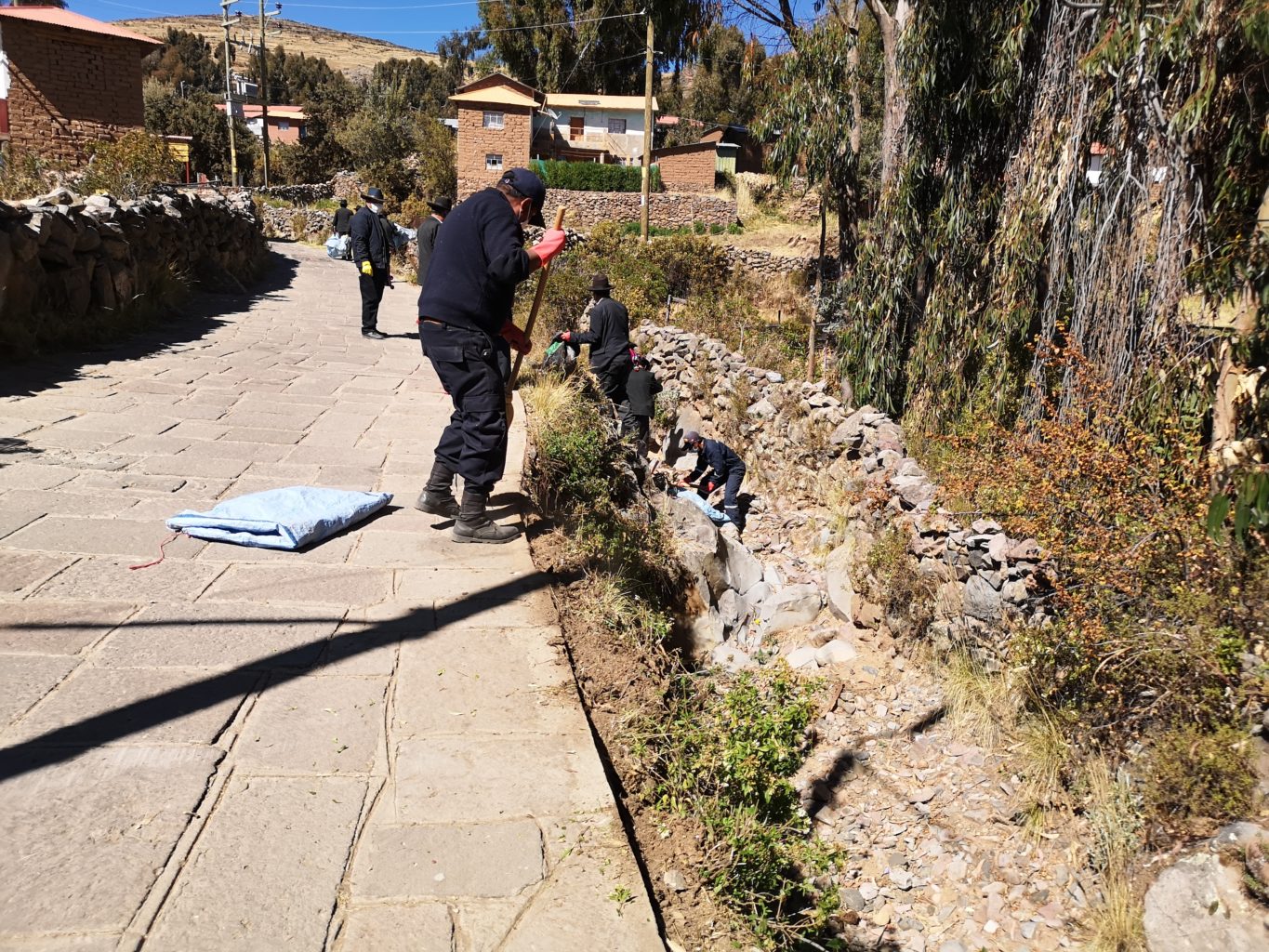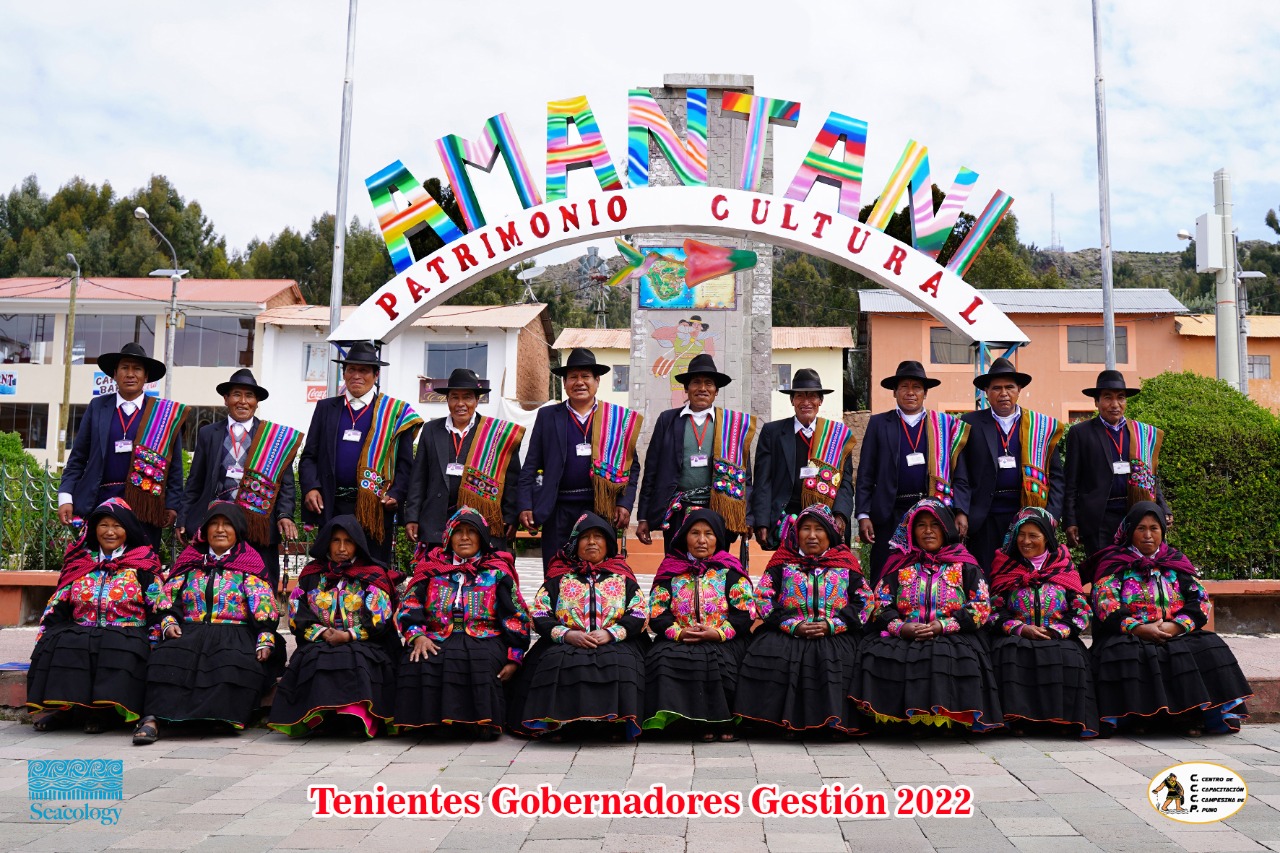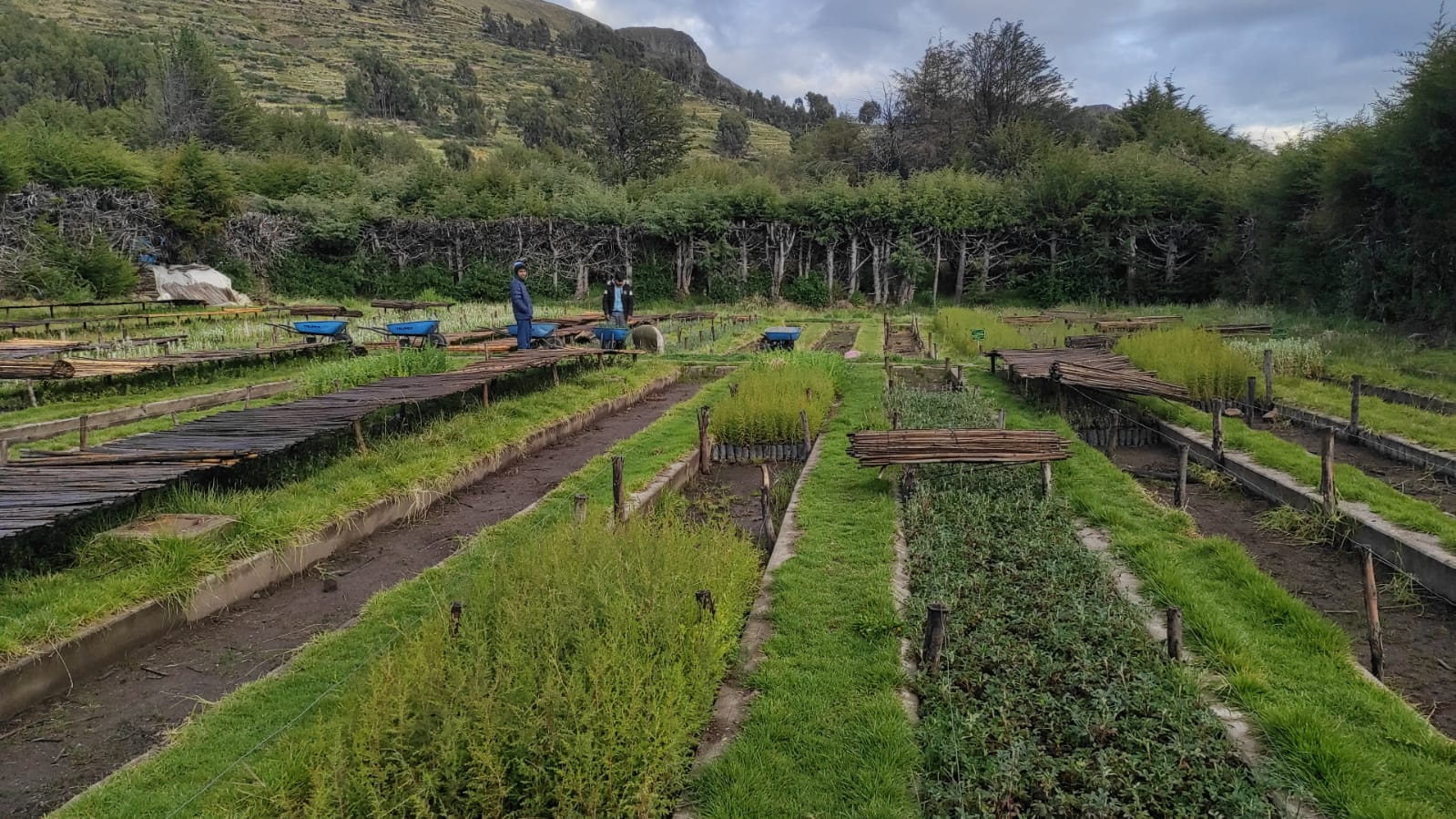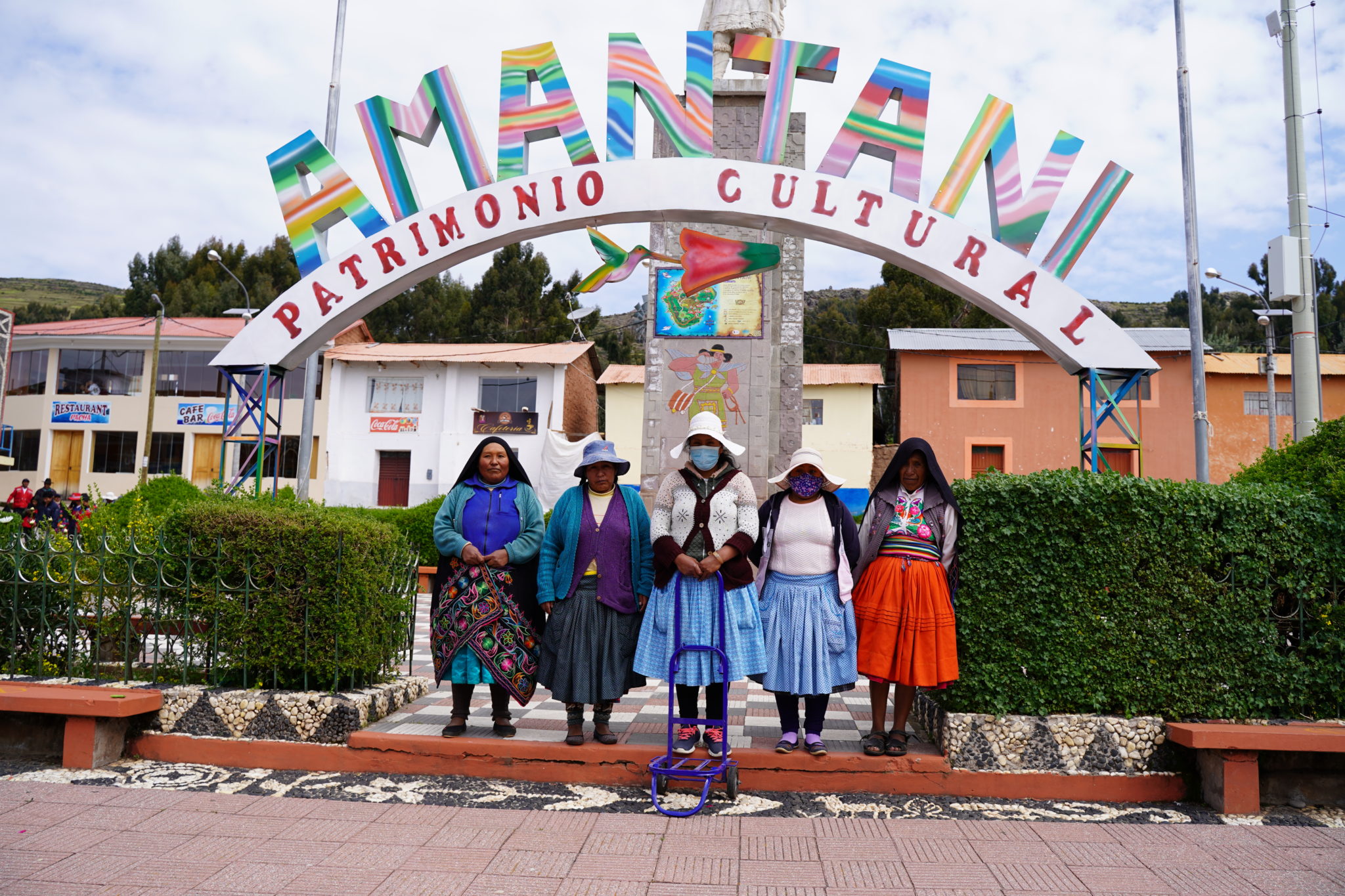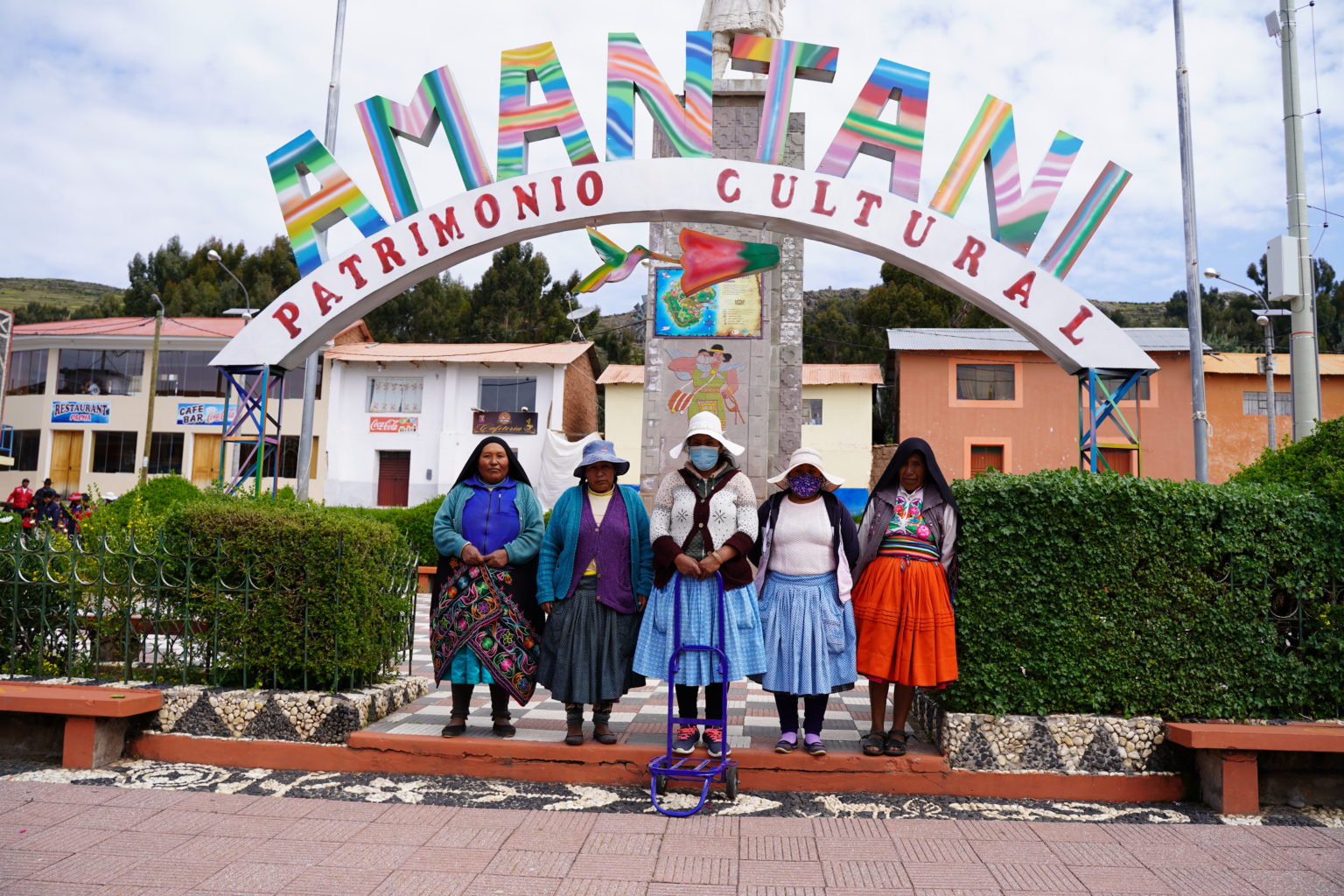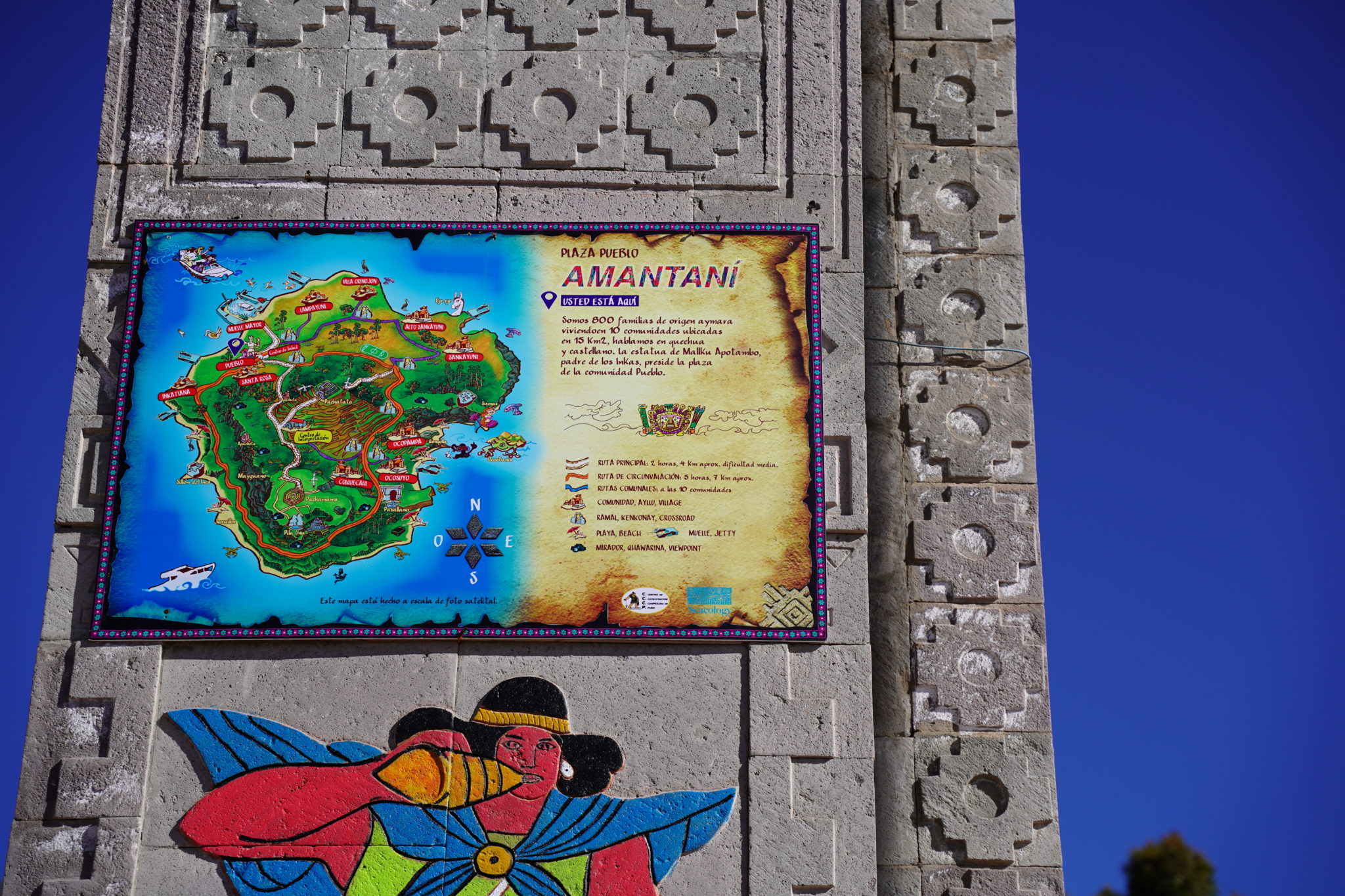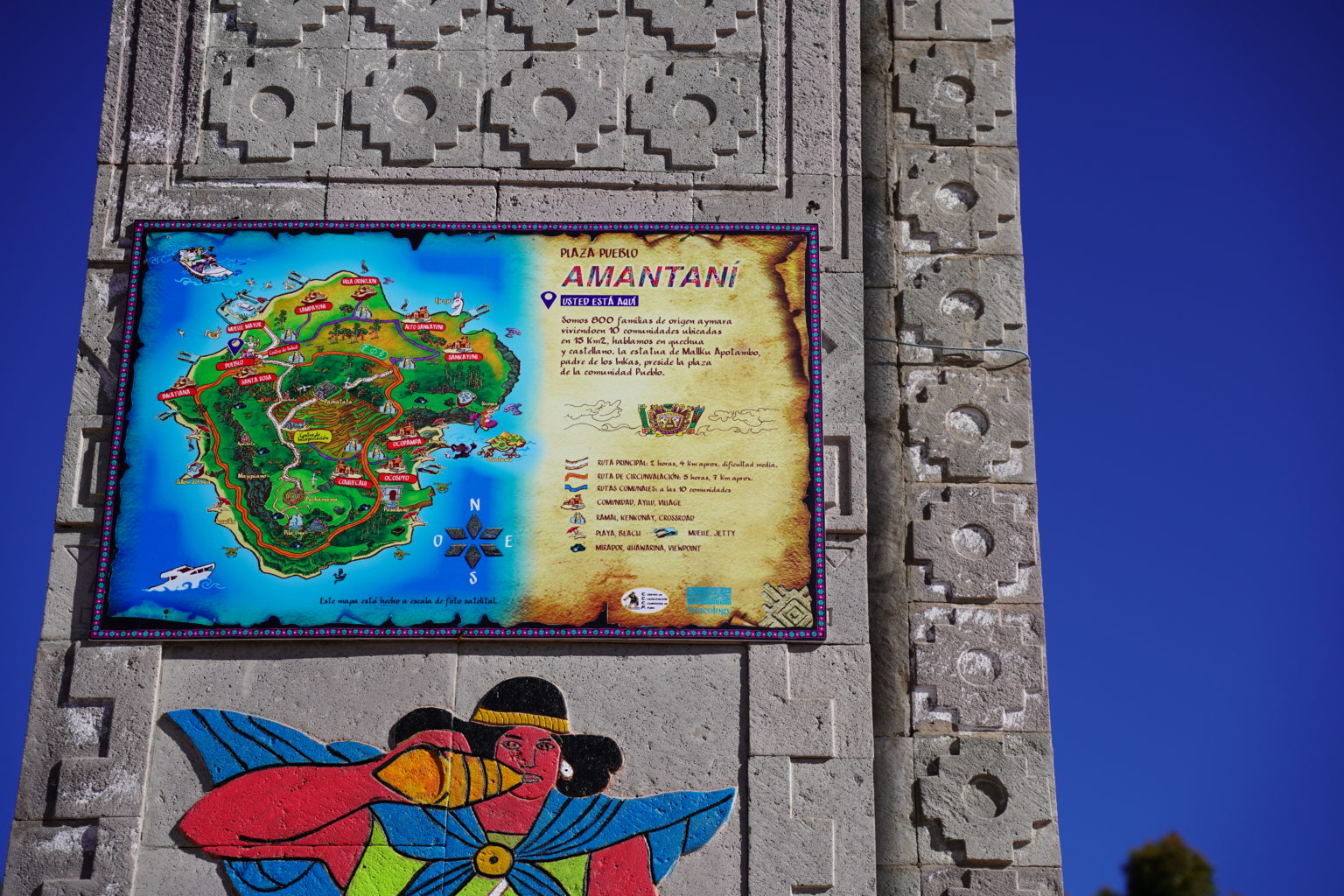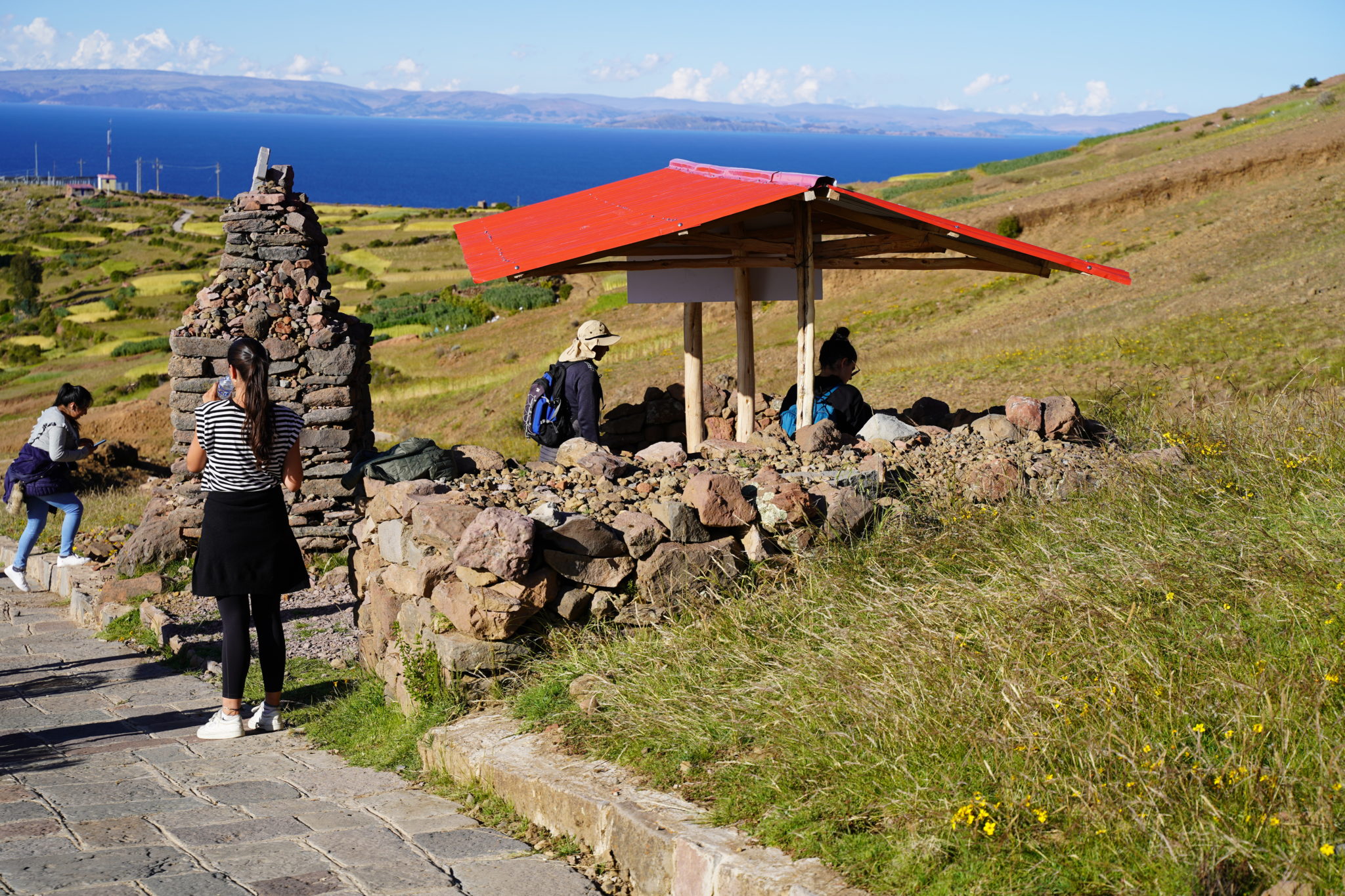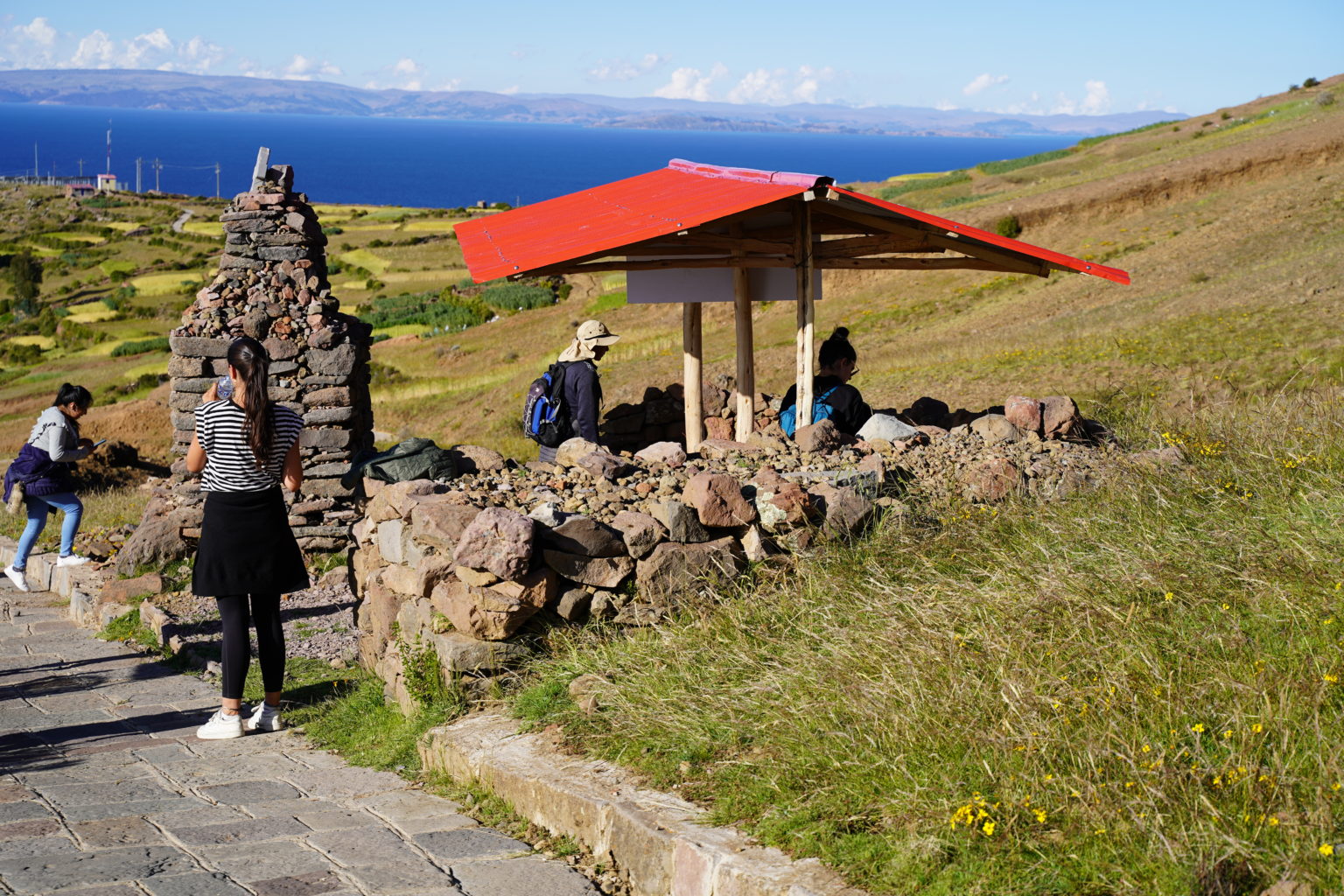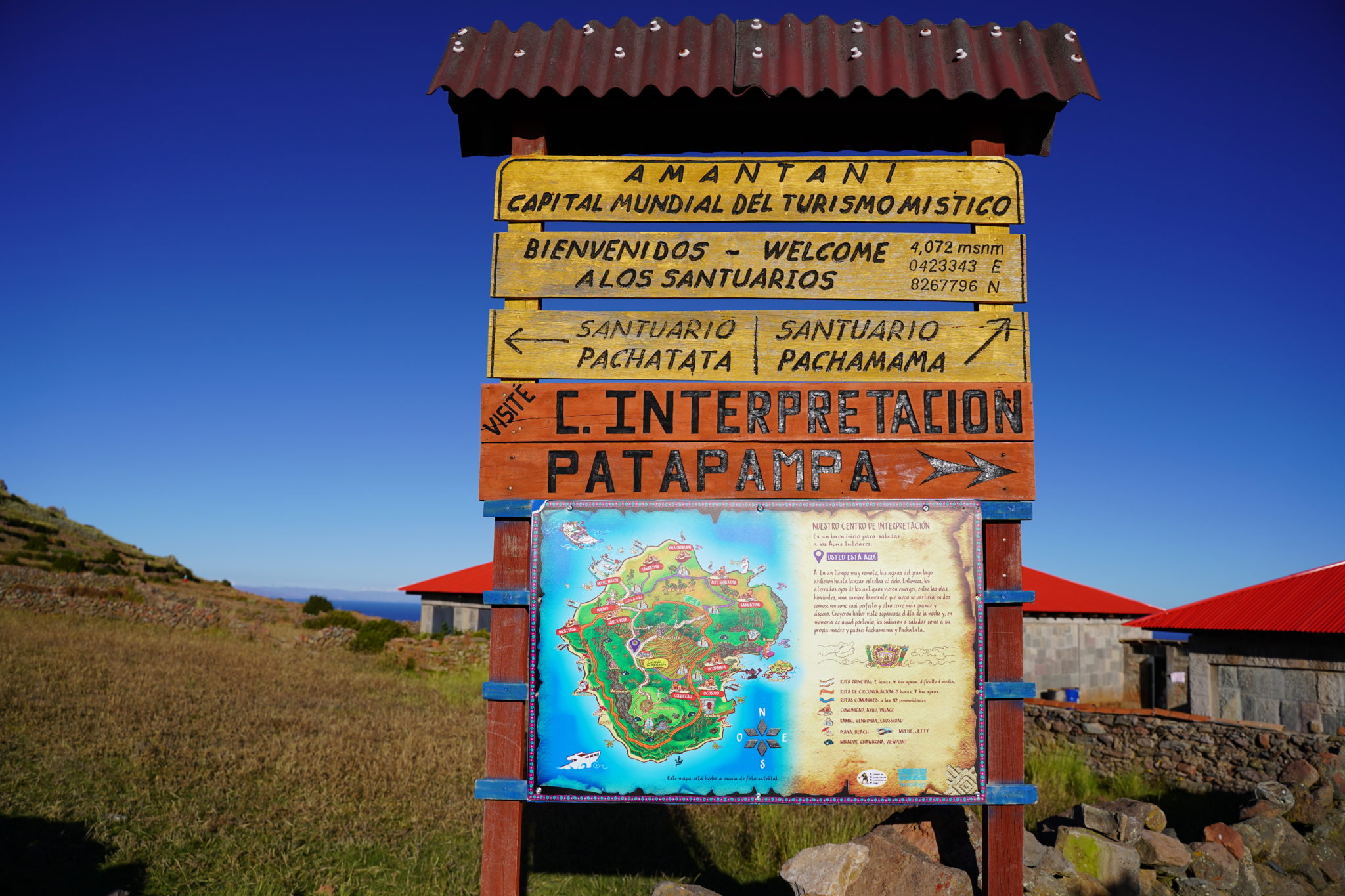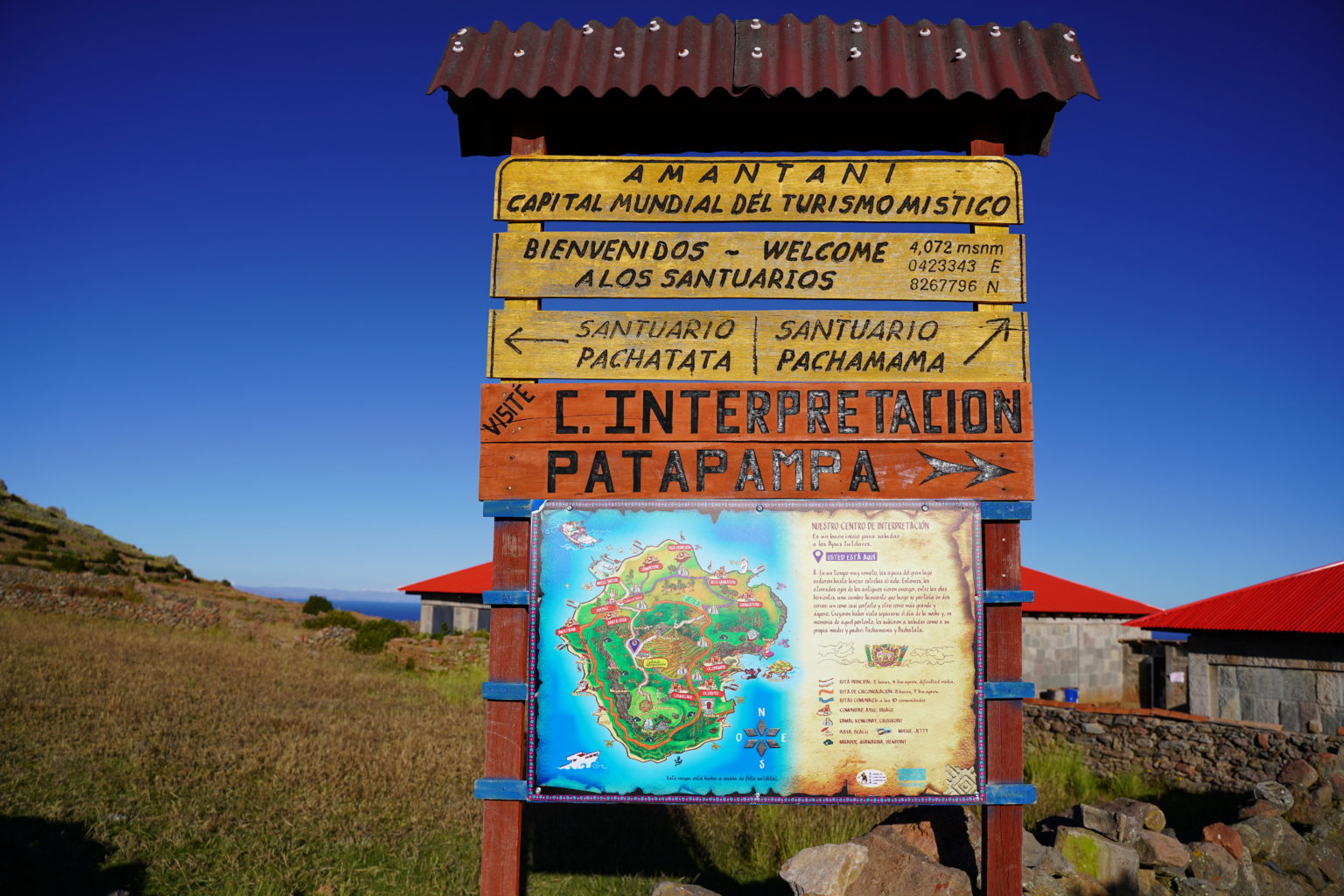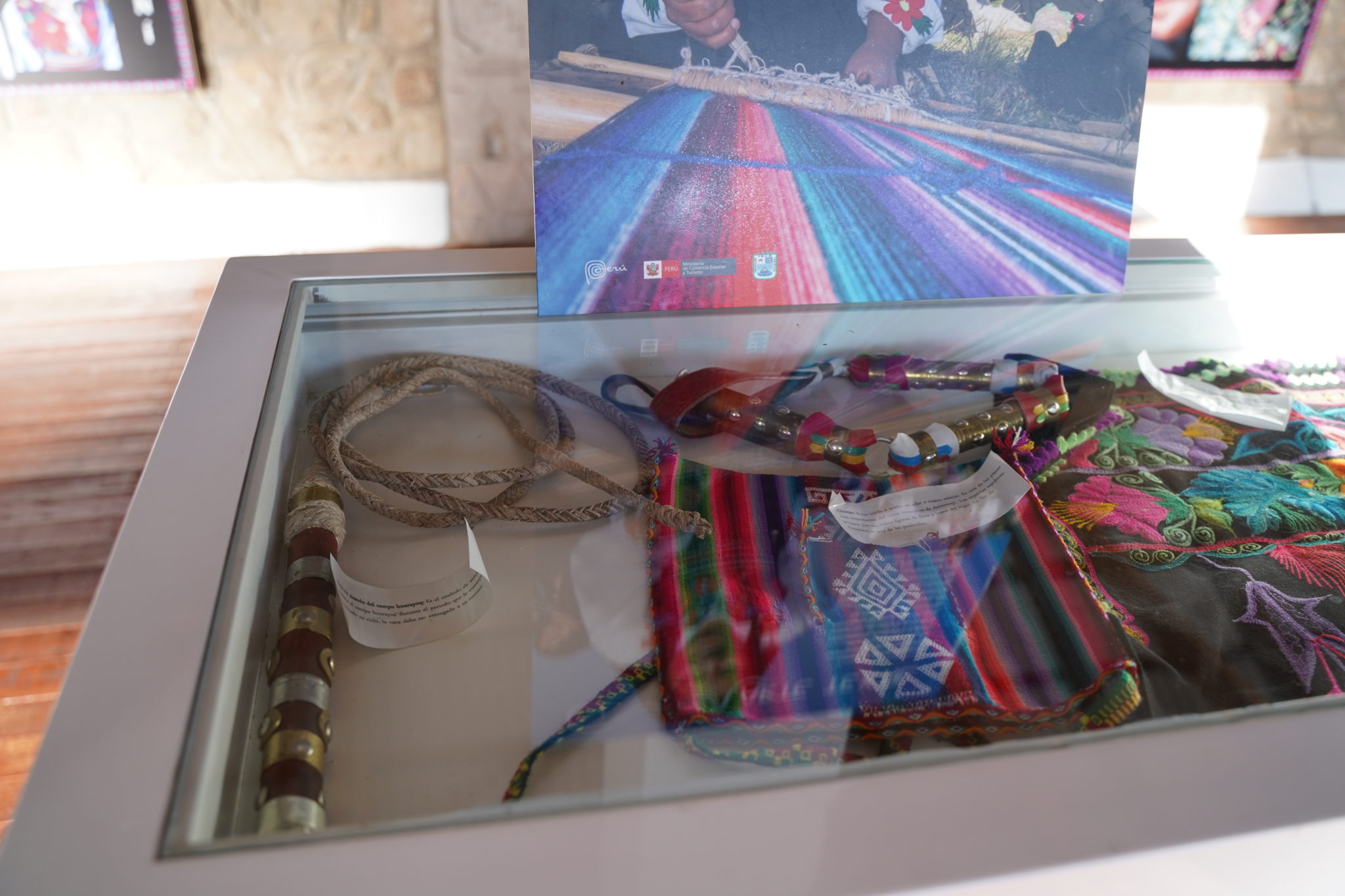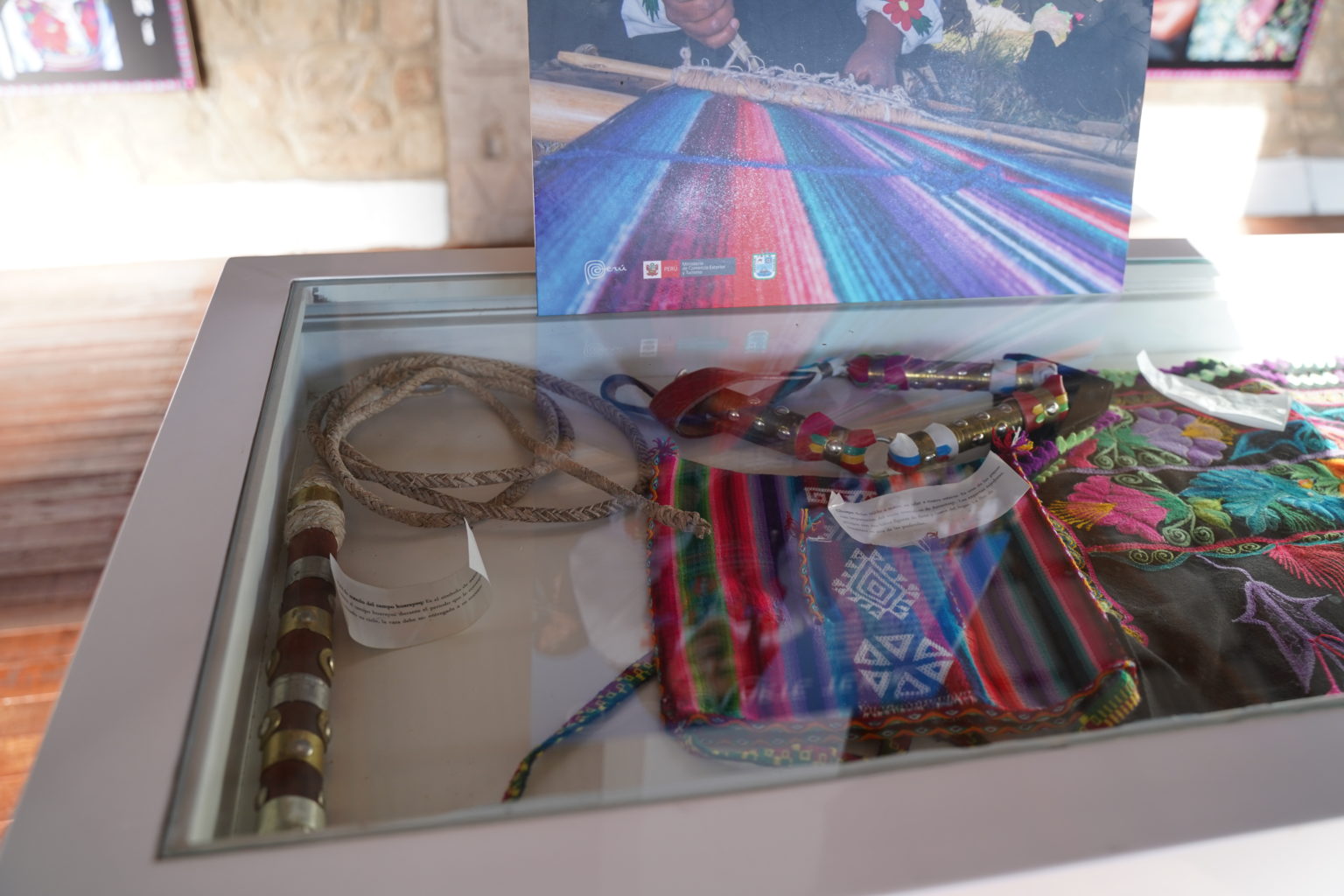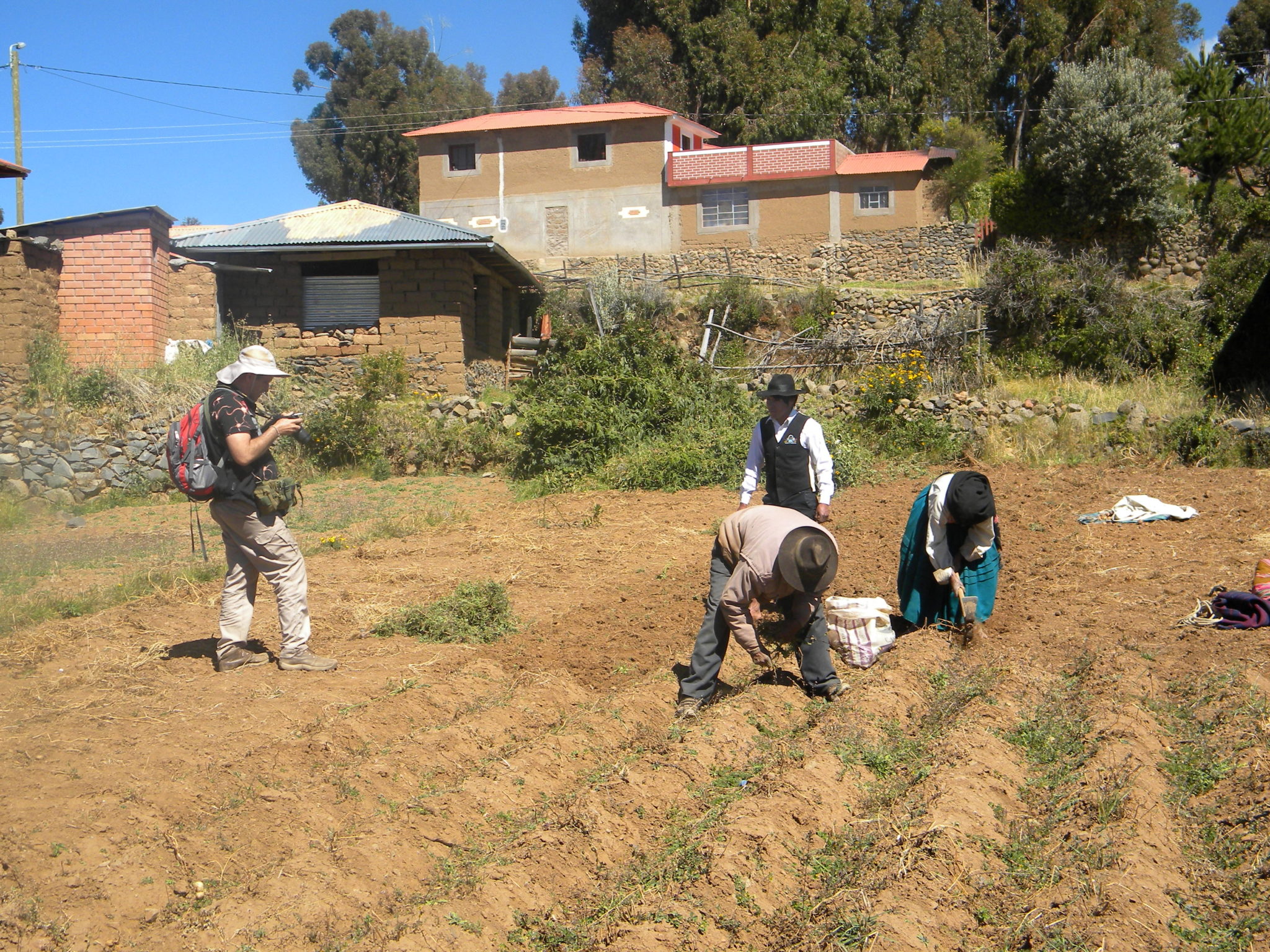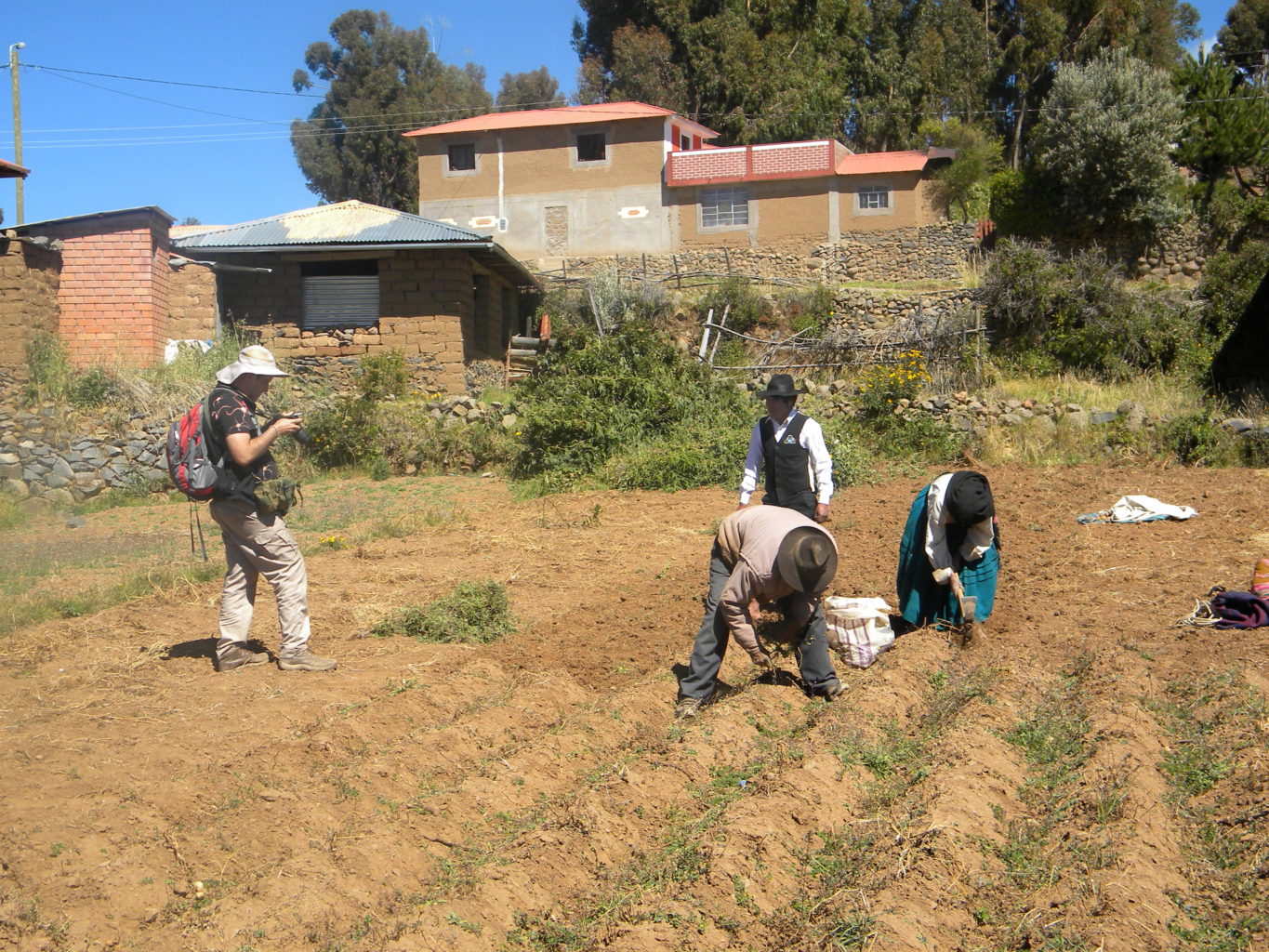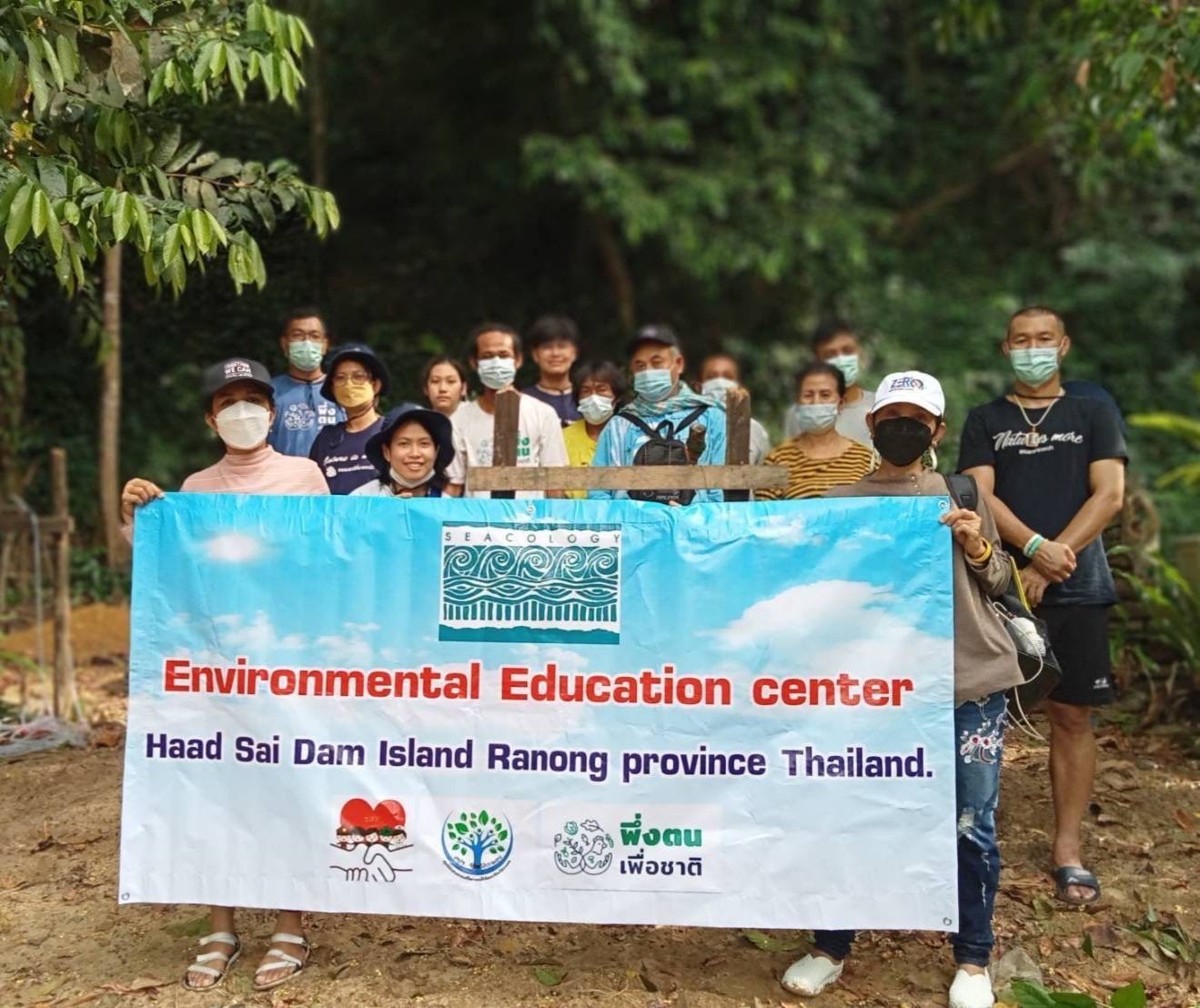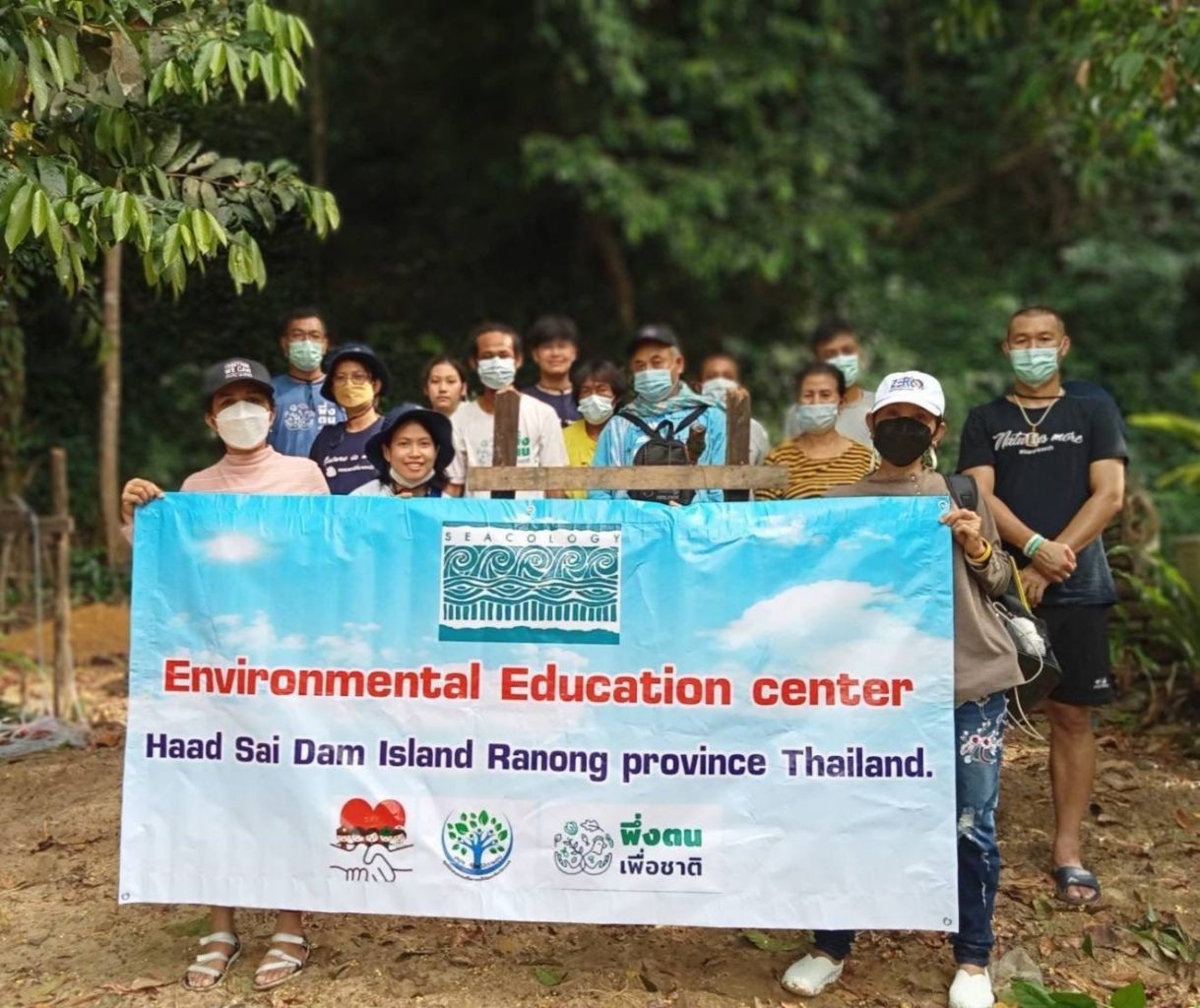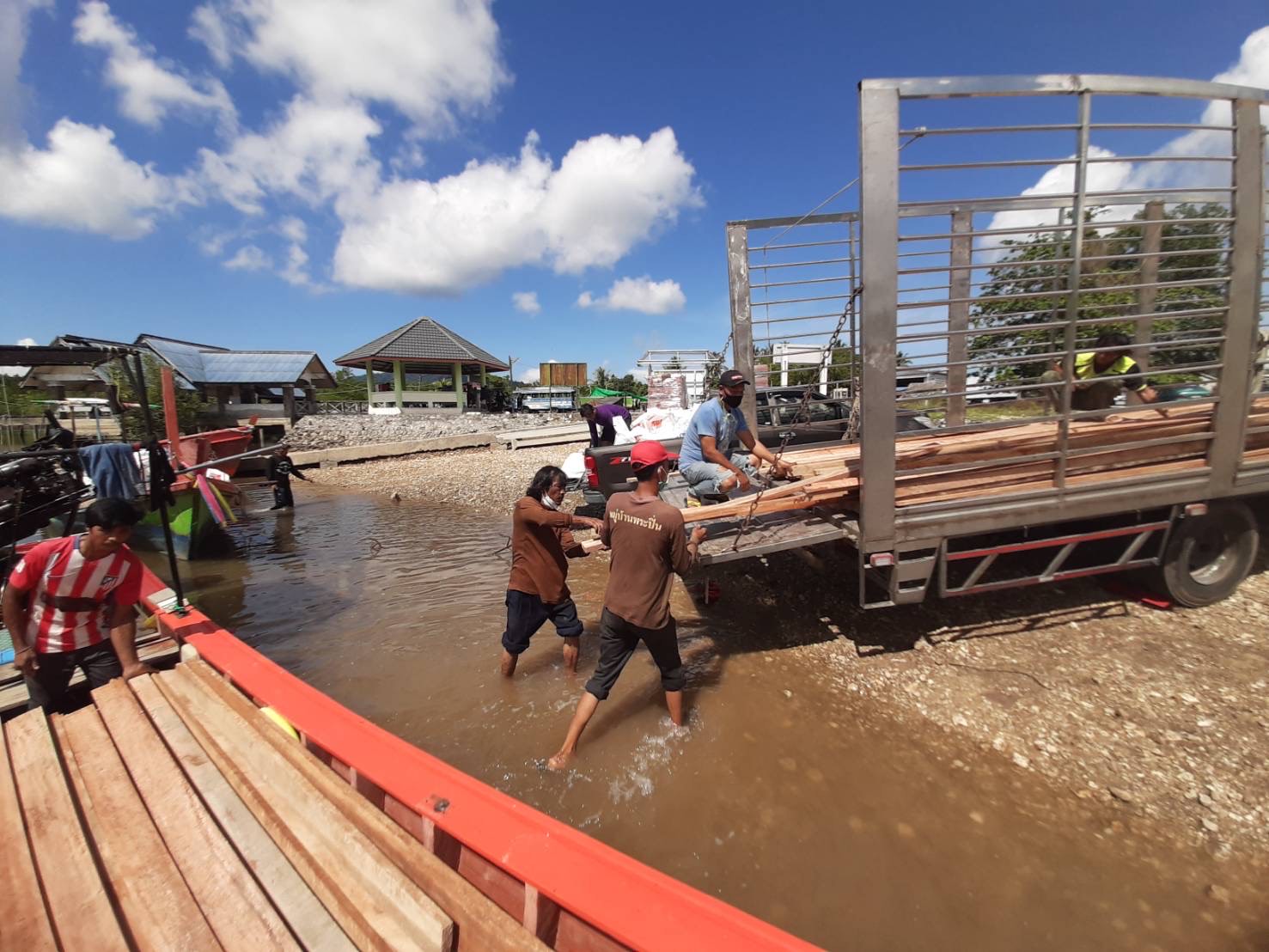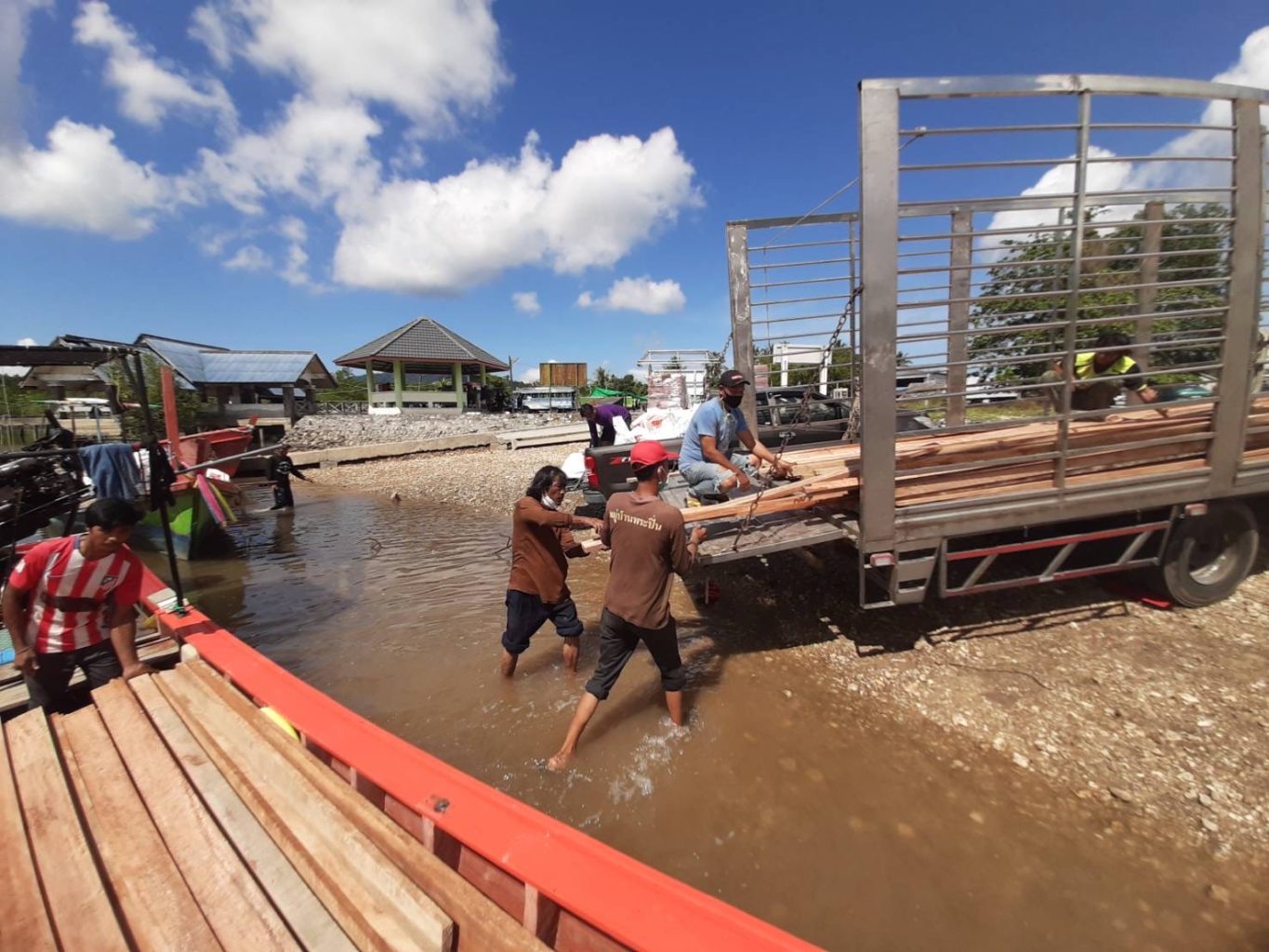Lake Titicaca, which sits high in the Andes Mountains, was a sacred spot for the Incas. This cold, deep lake is the largest lake in South America. It is home to more than 530 aquatic species and large populations of water birds, including the endemic and endangered flightless Titicaca grebe. The huge Titicaca water frog, which stretches up to two feet long, also lives there. But the lake’s famed biodiversity is threatened by industrial, agricultural, and household pollution.
To reduce pollution, Seacology is working with communities on Amantani, one of the lake’s many islands. About 4,200 people, indigenous Quechan speakers, call this island home. This project encourages villagers to use traditional terraced farm plots to grow native crops like potatoes and quinoa, without pesticides. Many of these terraced fields, which cover the island’s steep hills, were abandoned after heavy rains damaged them. Restoring them will reduce erosion that pours sediment into the lake. And shifting to organic agricultural practices will mean less pesticide runoff.
This project also provides garbage cans and equipment for separating recyclables. The municipality will pick up the garbage and see that it is disposed of properly off the island.
The third aspect of the project involves promoting small-scale tourism and environmental education. The community will build a new interpretive center next to an ancient emblematic stone called “Incatiana.” (Sacred spots at Machu Picchu have similar stone markers.) They will also build trails around the island, and replant two kinds of native trees on 2.5 acres of deforested land near the interpretive center.
The center will educate visitors and students about the ancestral use of the island and modern threats to the environment. Materials will also warn tourists against harming the endangered Titicaca grebe by taking eggs or inadvertently trampling the nests of these flightless birds.


